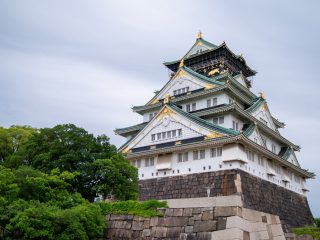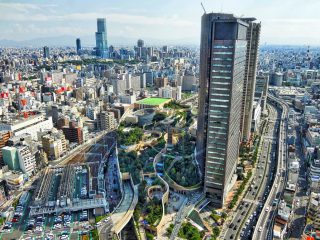Introduction
In this Osaka Travel Guide, one of the first things you’ll learn is the history of Osaka. Once known as Naniwa, has a rich history dating back to ancient Japan. It even served as the nation’s first capital in the 7th century before Kyoto took over the role. Fast forward to the Edo period (1603-1868), and Osaka had established itself as a significant economic hub, primarily through its renowned rice trade.
No Osaka Travel Guide would be complete without mentioning the city’s vibrant merchant culture, which earned it the nickname ‘the Nation’s Kitchen.’ Osaka also played crucial roles in Japan’s journey to modernization and was resilient enough to survive the heavy bombings during World War II.
Today, Osaka is Japan’s third-largest city, presenting a dynamic mix of traditional history and rapid modernization. This balance between the old and the new makes it a must-see destination for travelers.
Getting to Osaka
Getting to Osaka by Air
Osaka, nestled in the heart of the Kansai region, is seamlessly accessible by air, whether you’re jetting in from a neighboring Japanese city or crossing international skies.
1. Kansai International Airport (KIX)
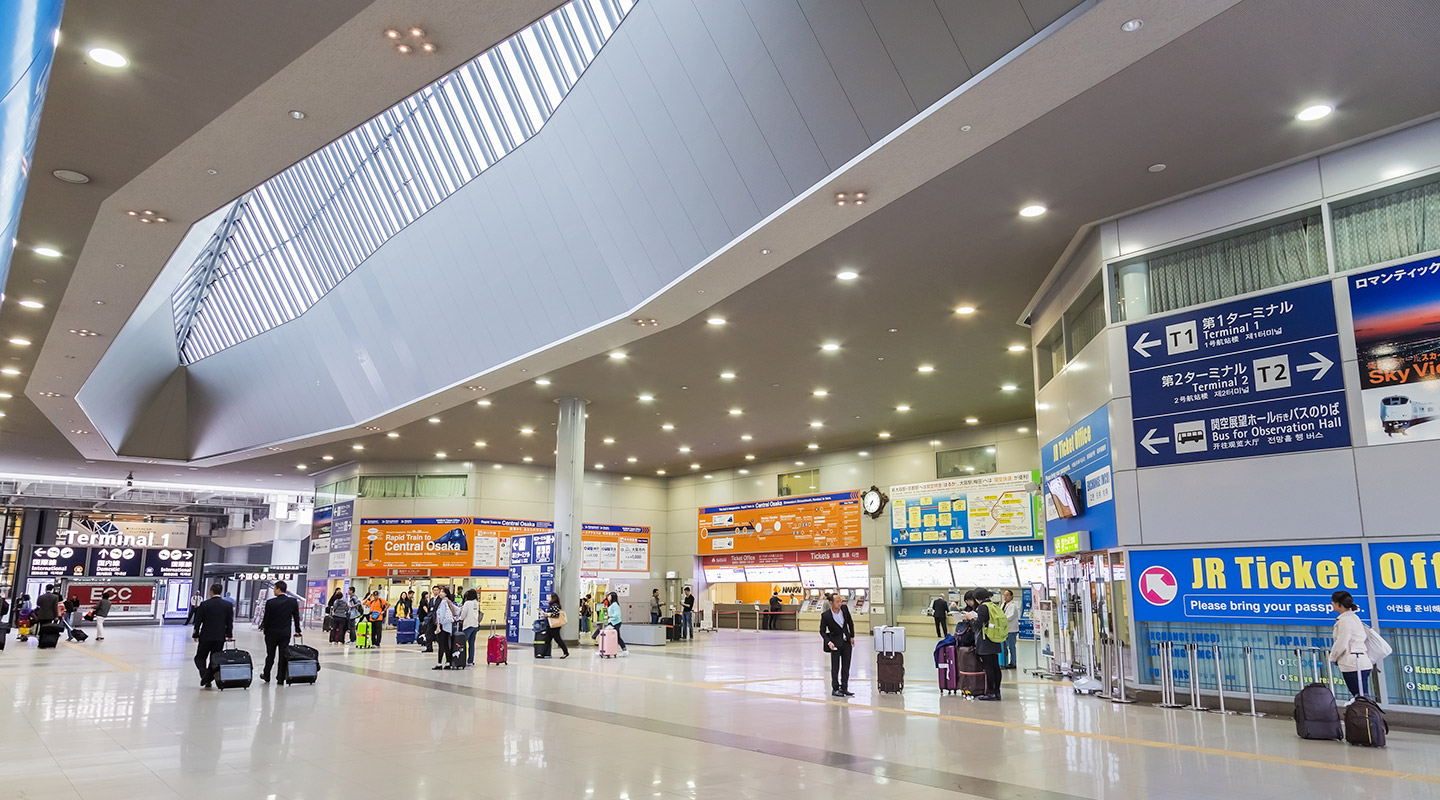
- International Flights: KIX is the primary international gateway, serving flights from North America, Europe, Asia, and other global regions.
- Transit: Once you’ve touched down, the airport is connected to Osaka city center via the JR Kansai Airport Line and the Nankai Airport Line, ensuring a smooth journey onward.
2. Osaka International Airport (ITM)
- Domestic Hub: Commonly known as Itami Airport, ITM predominantly handles domestic flights, connecting Osaka to Tokyo, Sapporo, Fukuoka, and other Japanese cities.
- Transportation: Various bus lines, trains, and taxis make it convenient for travelers to move from ITM to Osaka’s core or neighboring areas.
Both airports boast an array of services, including free Wi-Fi, currency exchange, and tourist information centers. These amenities ensure visitors kickstart their Osaka adventure on the right foot.
Osaka’s Train and Subway Systems
Osaka’s train and subway systems are efficient, clean, and often the best way to get around the city. For travelers, understanding the basics will make navigating the city a breeze.
1. Subway:
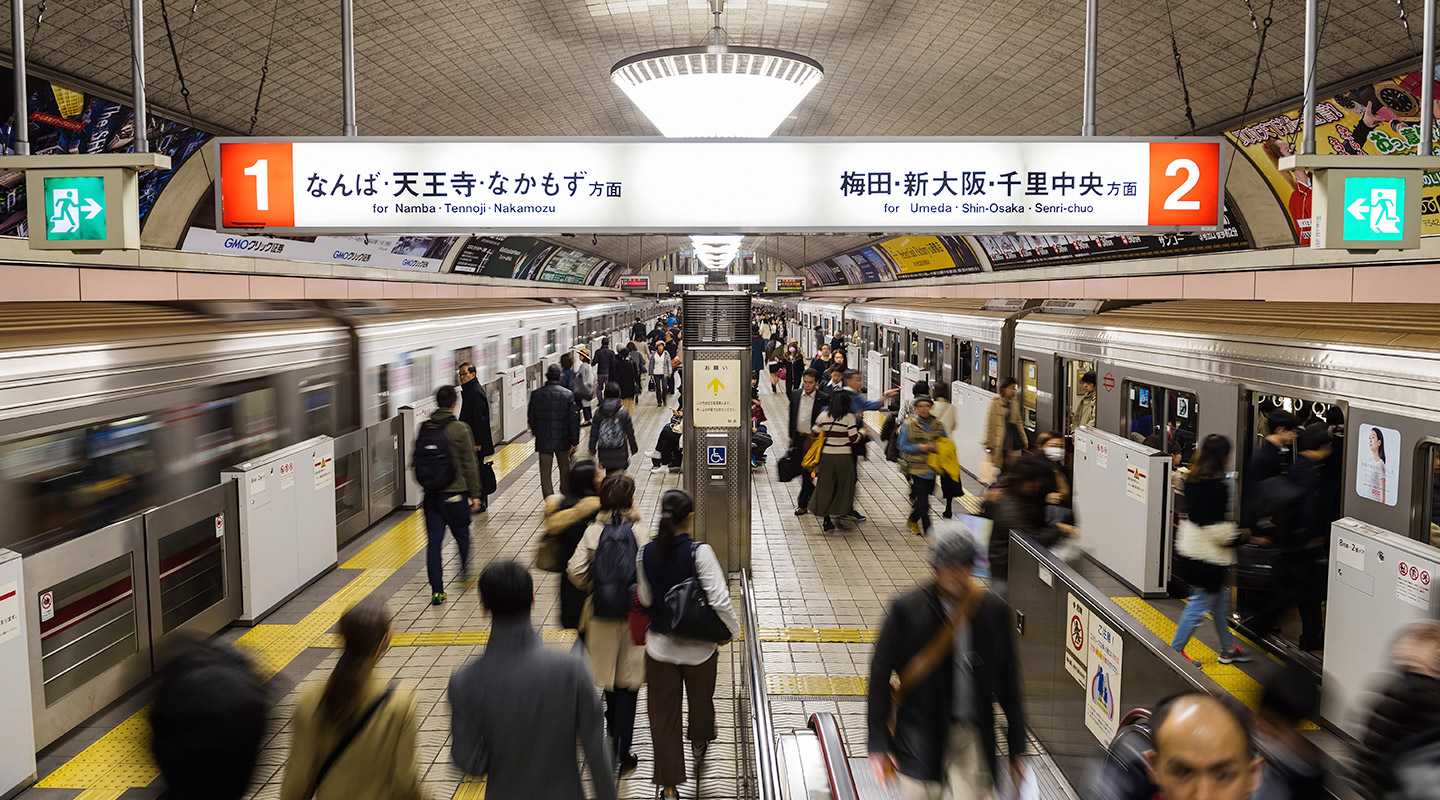
- Lines: Osaka’s subway system has 8 lines, each color-coded and easily recognizable. Popular ones include the Midosuji (red) line, which connects major hubs like Umeda and Namba.
- Tickets: Buy tickets from machines at stations. They have English options. You choose your destination, and the machine shows the price.
- IC Cards: Consider getting a prepaid IC card (like ICOCA). It’s a tap-and-go system that works on subways, buses, and many trains. Plus, no need for individual tickets each trip!
2. Trains:
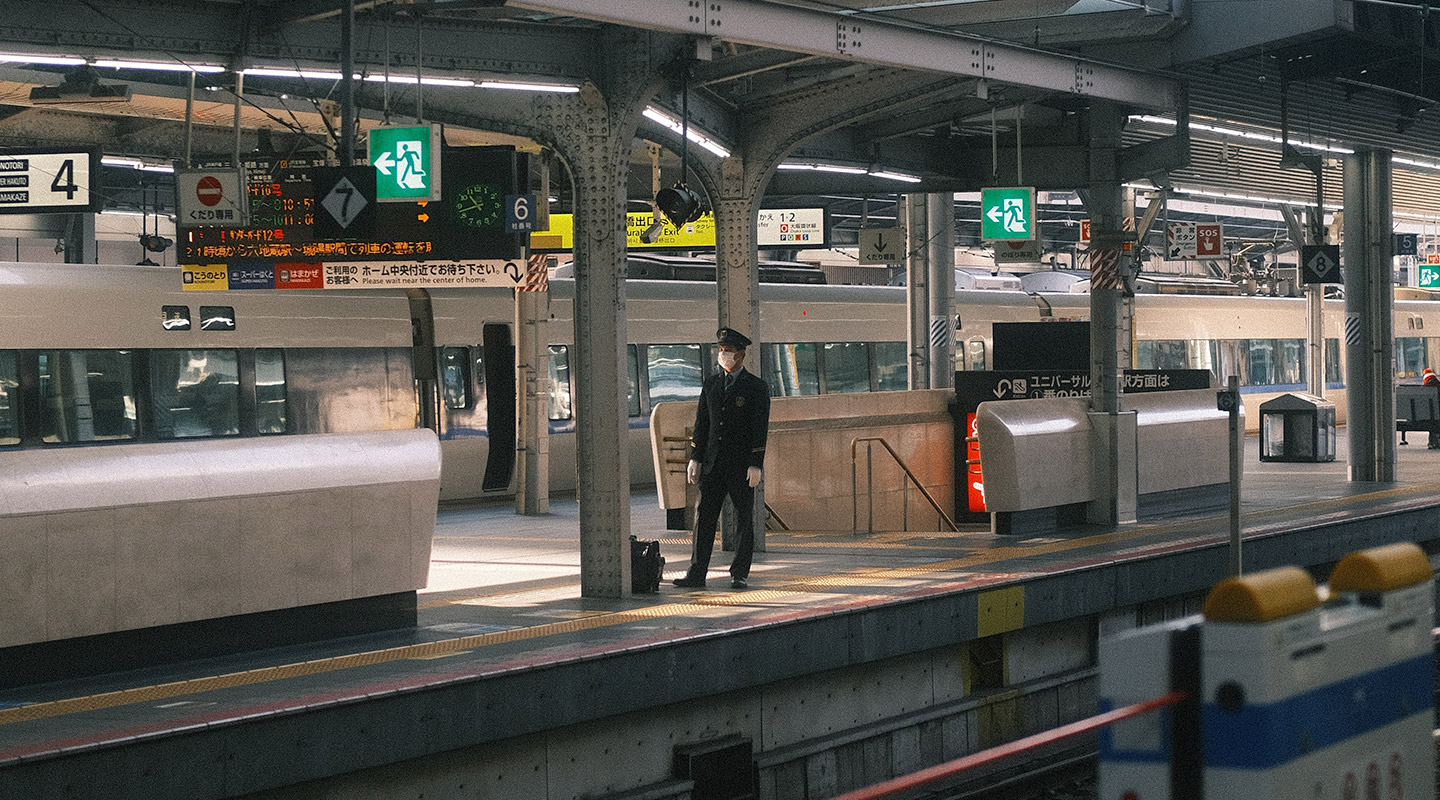
- JR (Japan Rail) Lines: The JR Osaka Loop Line circles the city, connecting major spots. Useful for tourists and covered by the Japan Rail Pass
- Private Railways: Lines like Hankyu, Keihan, and Nankai connect Osaka to nearby cities. For example, the Nankai line is a direct route to Kansai Airport.
- Seating: Trains have both reserved and non-reserved cars. If you have heavy luggage, avoid rush hours (7:30-9:30 AM and 5:00-7:00 PM).
Discover Osaka Station
Learn the differences between the main transport hubs of Osaka
Tips:
- Maps: Station maps are available in English. Mobile apps like HyperDia or Google Maps also provide train times and routes.
- Fares: If unsure about the fare, buy the minimum ticket. You can adjust it at your destination station at a “Fare Adjustment” machine.
- Platform Etiquette: Always stand in line and let passengers off before boarding. Many stations have marked areas to queue.
Remember, while the train and subway systems might seem overwhelming at first, after a ride or two, you’ll find them easy to use and incredibly convenient for exploring Osaka. Safe travels!
Osaka Buses Overview
Buses in Osaka offer a complement to the city’s extensive train and subway systems. They reach destinations that might be less convenient by rail, and often provide a scenic view of the city’s streets.
Using the Buses:
- Tickets: Board from the back and take a ticket. When exiting from the front, check the screen for your fare and pay in cash or with an IC card (like ICOCA).
- Routes & Timetables: Bus stops display route maps and timetables. Some popular tourist routes also provide information in English.
- IC Cards: Just like with subways, these cards can be tapped when boarding and alighting, making travel seamless.
Difference between Buses and the Subway System:
- Coverage: While the subway efficiently connects major hubs, buses cover more ground, reaching places that might not have a nearby subway station.
- Scenery: Buses offer a street-level view of Osaka, which can be more scenic and revealing than the mostly underground subway.
- Frequency: Subways tend to run more frequently than buses. During peak hours, it’s often quicker to take the subway due to road traffic.
- Ease of Use: For newcomers, the subway might be more straightforward due to its clear color-coded lines and English-friendly navigation. Buses require a bit more familiarity with the city, but they are by no means overly complicated.
Tips for Bus Travel:
- Google Maps: This tool is invaluable for bus travel. It provides bus numbers, departure times, and even where to board.
- Stay Alert: Buses announce stops, but if unsure about where to alight, ask the driver or use a map app.
While Osaka’s subway is a fast and efficient way to get around the main areas, buses ensure you can explore the city’s nooks and crannies. Combining both modes of transport can offer a comprehensive Osaka experience.
Bicycle and Walking Paths in Osaka: A Greener Way to Explore
Bicycle Paths
Osaka, with its flat terrain and compact design, is perfect for cycling. Whether you’re an avid cyclist or a casual rider, you’ll appreciate the city’s efforts to accommodate two-wheelers.
- Rentals: Numerous shops, especially around tourist areas like Namba and Umeda, offer bicycles for rent. Some hotels also provide this service. The process is straightforward, usually requiring an ID and a small deposit.
- Designated Paths: While Osaka doesn’t have an extensive network of bike-only lanes, many sidewalks are divided into pedestrian and bicycle sections. Always adhere to the markings to ensure safety for everyone.
- Parking: Designated bike parking areas are available throughout the city. It’s essential to park here to avoid getting your bike removed or fined. Some areas charge a small fee.
Walking Paths
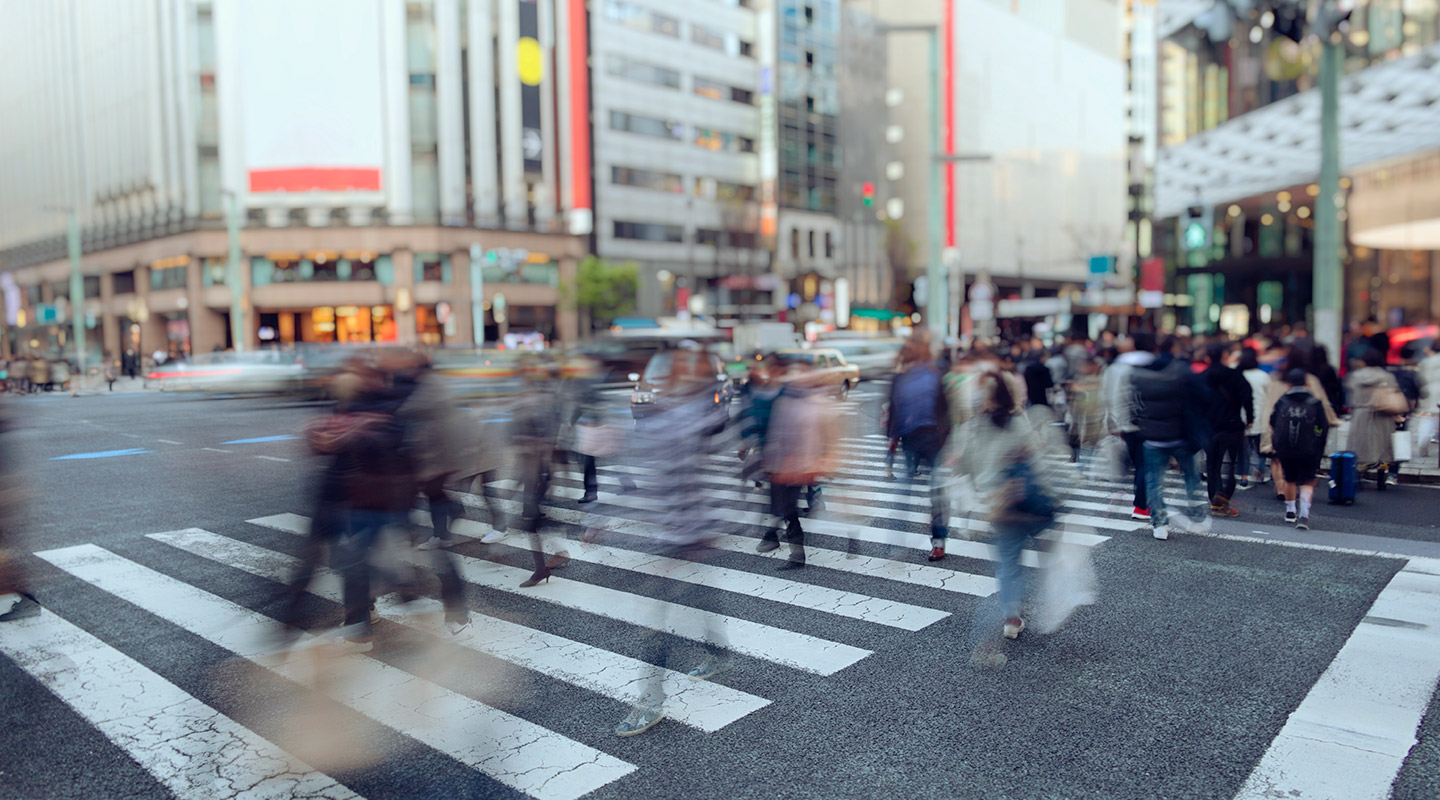
Walking is perhaps the best way to immerse oneself in the city’s ambiance. Osaka offers a plethora of paths tailored for pedestrians:
- River Paths: The Dotonbori and Okawa rivers have beautiful walking paths alongside them, perfect for a leisurely stroll or a picturesque jog.
- Osaka Castle Park: A vast green space surrounding the historical Osaka Castle, with well-maintained paths, making it ideal for walking or a quick run.
- Shinsaibashi & Dotonbori: Pedestrian-only zones, bustling with shops, restaurants, and the iconic Glico Man sign. Perfect for shopping and people-watching.
- Tennoji Park: Another green oasis, offering serene walking paths, and home to the city’s zoo.
The Difference Between Biking and Walking
- Pace: Biking allows for covering more ground quickly, ideal for a packed itinerary. Walking, on the other hand, offers a more intimate and relaxed pace, perfect for deep exploration.
- Accessibility: Some areas, especially crowded ones, might restrict bicycles but are accessible by foot.
Osaka's Vibrant Neighborhoods
Osaka, often dubbed Japan’s kitchen, isn’t just a food paradise. Its distinct neighborhoods each carry their own flavor, style, and history. Let’s journey through these areas that form the backbone of a traveler’s Osaka experience.
Namba (難波)
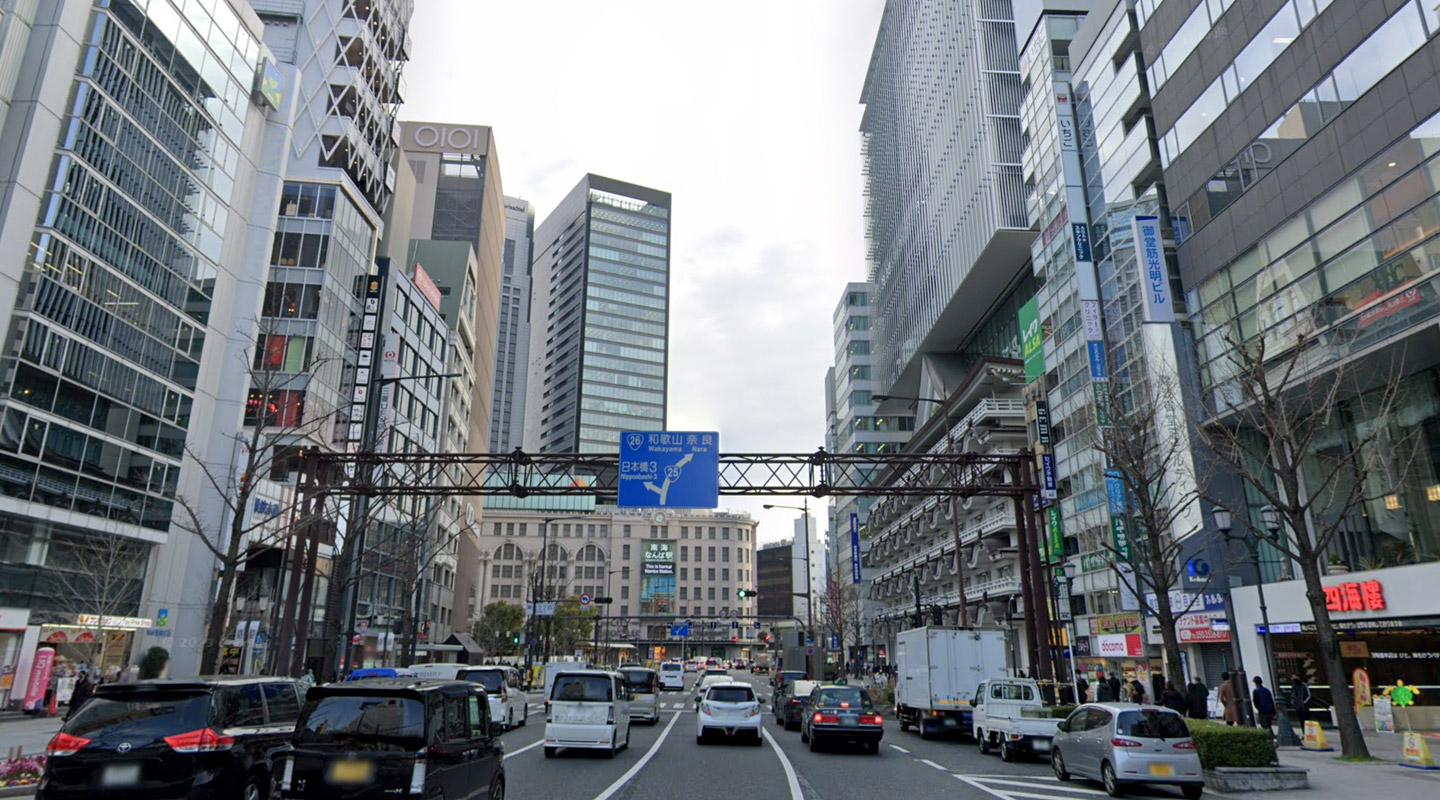
The beating heart of Osaka’s entertainment, Namba is a sensory feast. Here, sounds of laughter blend with aromas of delectable street food.
Discover: Namba Travel Guide
Traveler Tip: Wander around Dotonbori and be dazzled by its neon-lit streets. Relish the taste of takoyaki, Osaka’s favorite octopus snack, from street vendors.
Umeda (梅田)
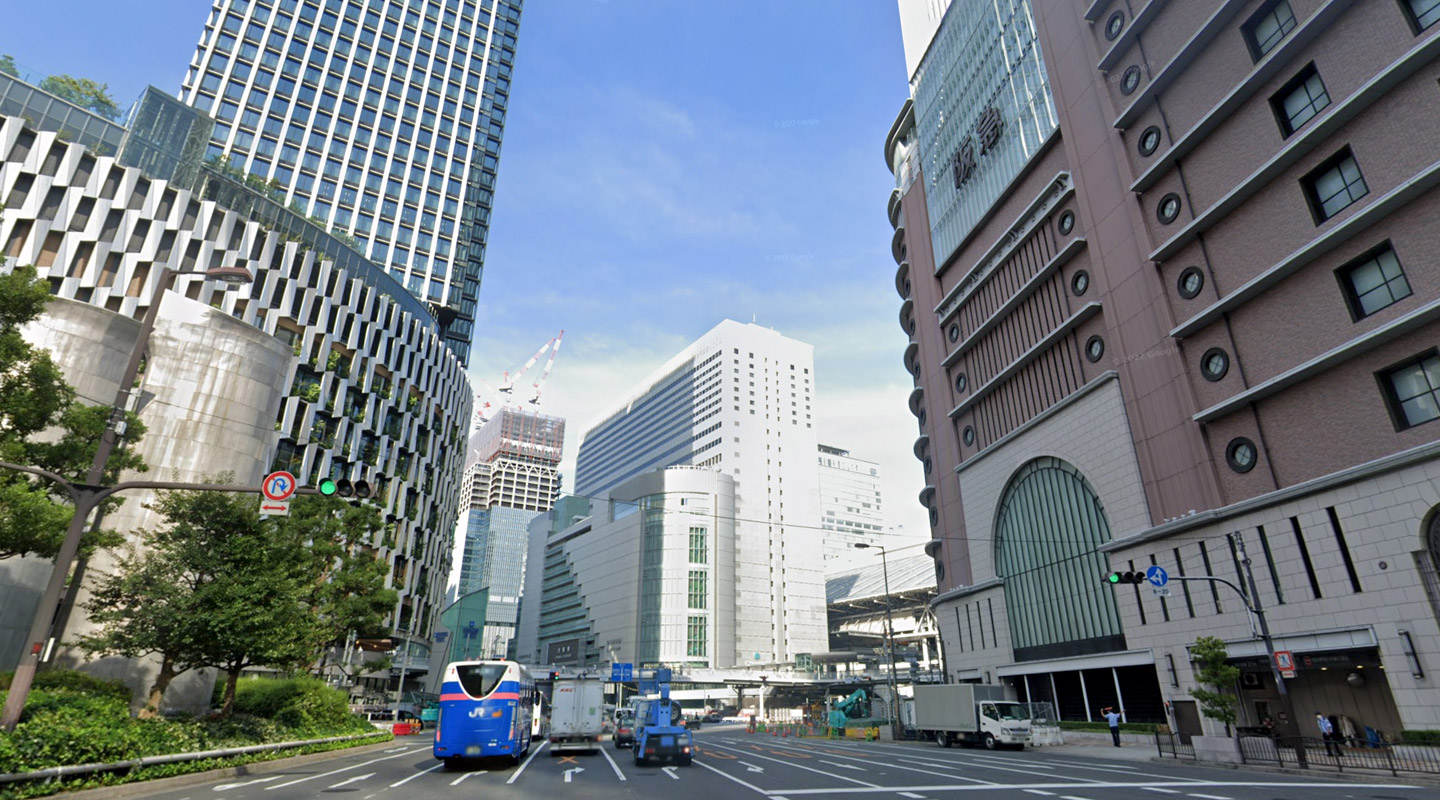
Osaka’s primary business district is more than just towering skyscrapers. Umeda offers an eclectic mix of shopping, dining, and entertainment options.
Traveler Tip: Visit the Umeda Sky Building for panoramic city views, and navigate the underground shopping maze of the Umeda Chikagai.
Tennoji (天王寺)
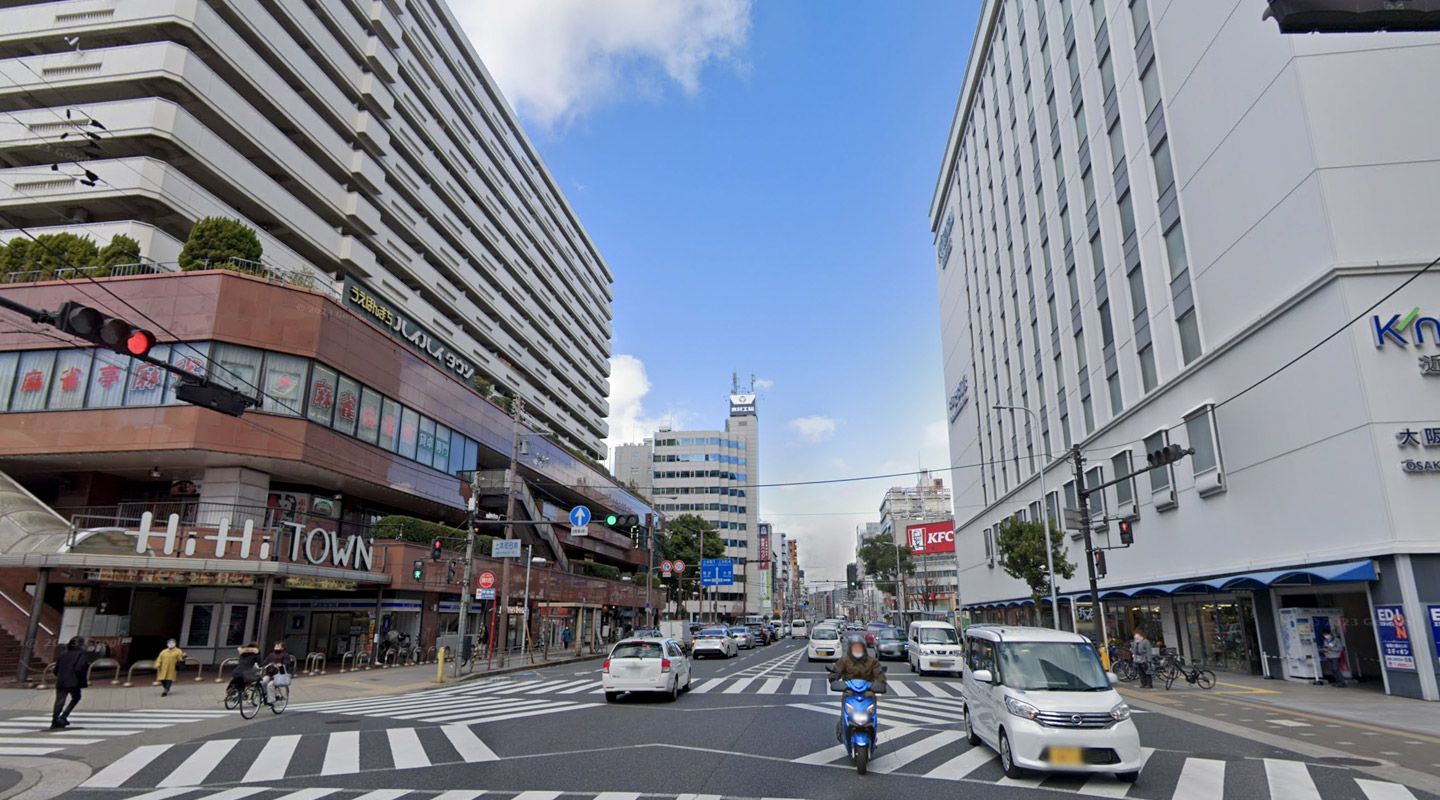
A historic area undergoing rapid modernization, Tennoji boasts a blend of temples, a bustling zoo, and soaring skyscrapers.
Traveler Tip: Drop by the Shitenno-ji Temple, Japan’s oldest official temple, and later admire the cityscape from the Abeno Harukas, Japan’s second tallest building.
Shinsekai (新世界)
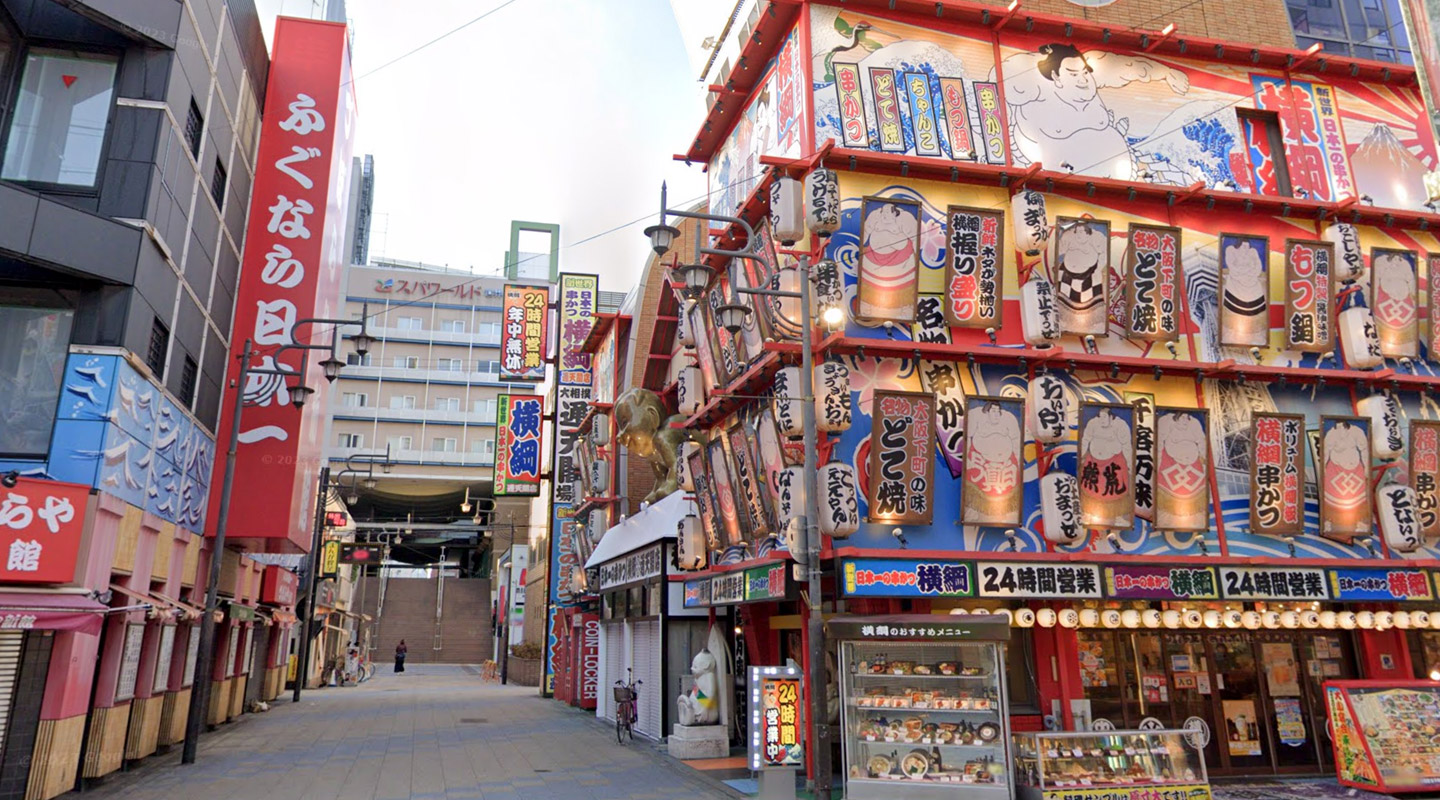
Retro and charmingly gritty, Shinsekai is a nostalgic leap back into post-war Japan, featuring colorful billboards and old-world eateries.
Traveler Tip: Taste kushikatsu, breaded and deep-fried skewers, a local delight. Visit the Tsutenkaku Tower, the neighborhood’s iconic beacon.
Horie (堀江)
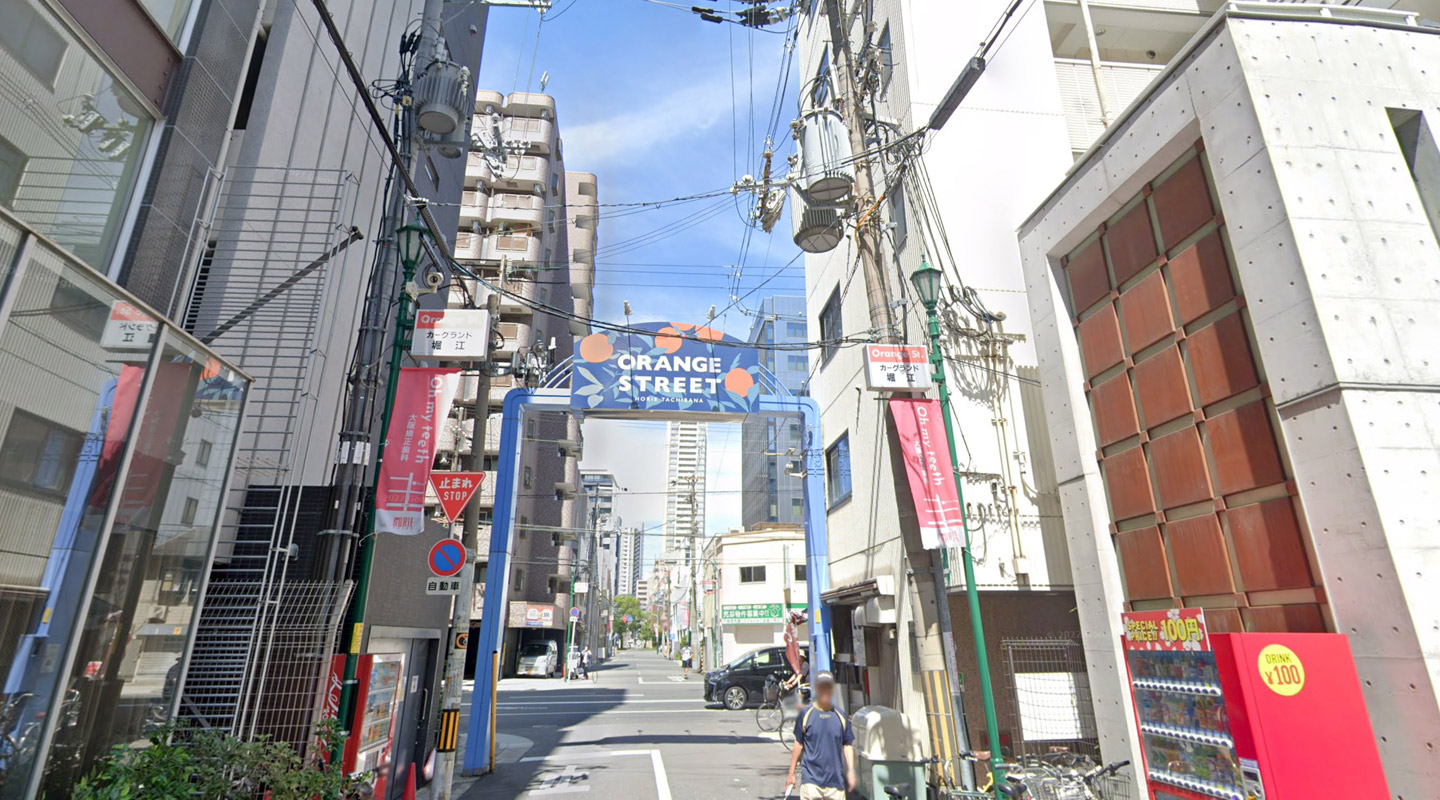
A hipster’s paradise, Horie stands out with its trendy boutiques, chic cafes, and minimalist design stores.
Traveler Tip: Stroll along the Orange Street, known for its design-conscious shops, and enjoy a coffee break at one of the artisan cafes.
Kitashinchi (北新地)
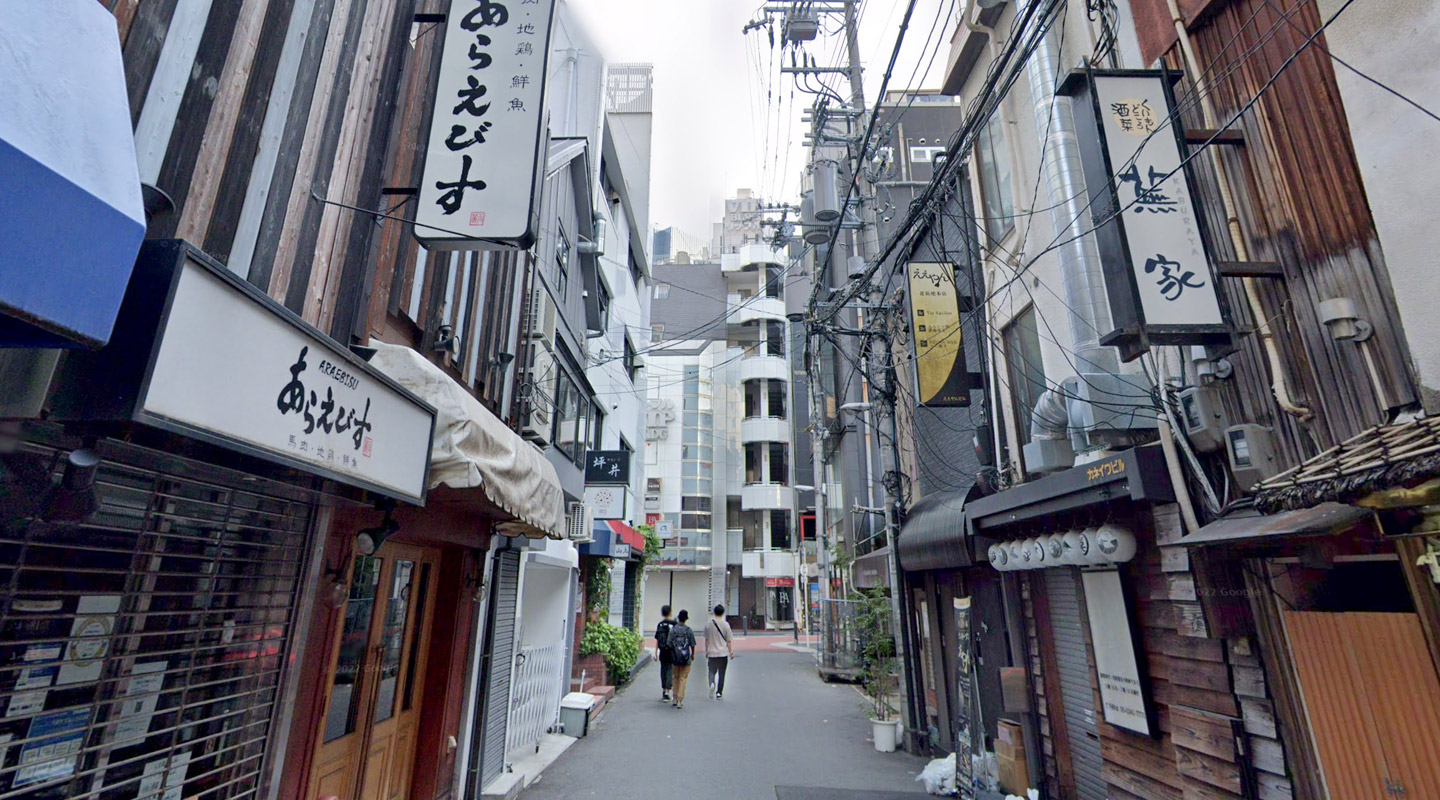
A nightlife hub, Kitashinchi comes alive after dusk with its bars, restaurants, and hostess clubs, illuminating Osaka’s vibrant nocturnal scene.
Traveler Tip: While it’s more on the upscale side, you can still find affordable local izakayas (Japanese taverns) for a nightcap.
Amerikamura (アメリカ村)
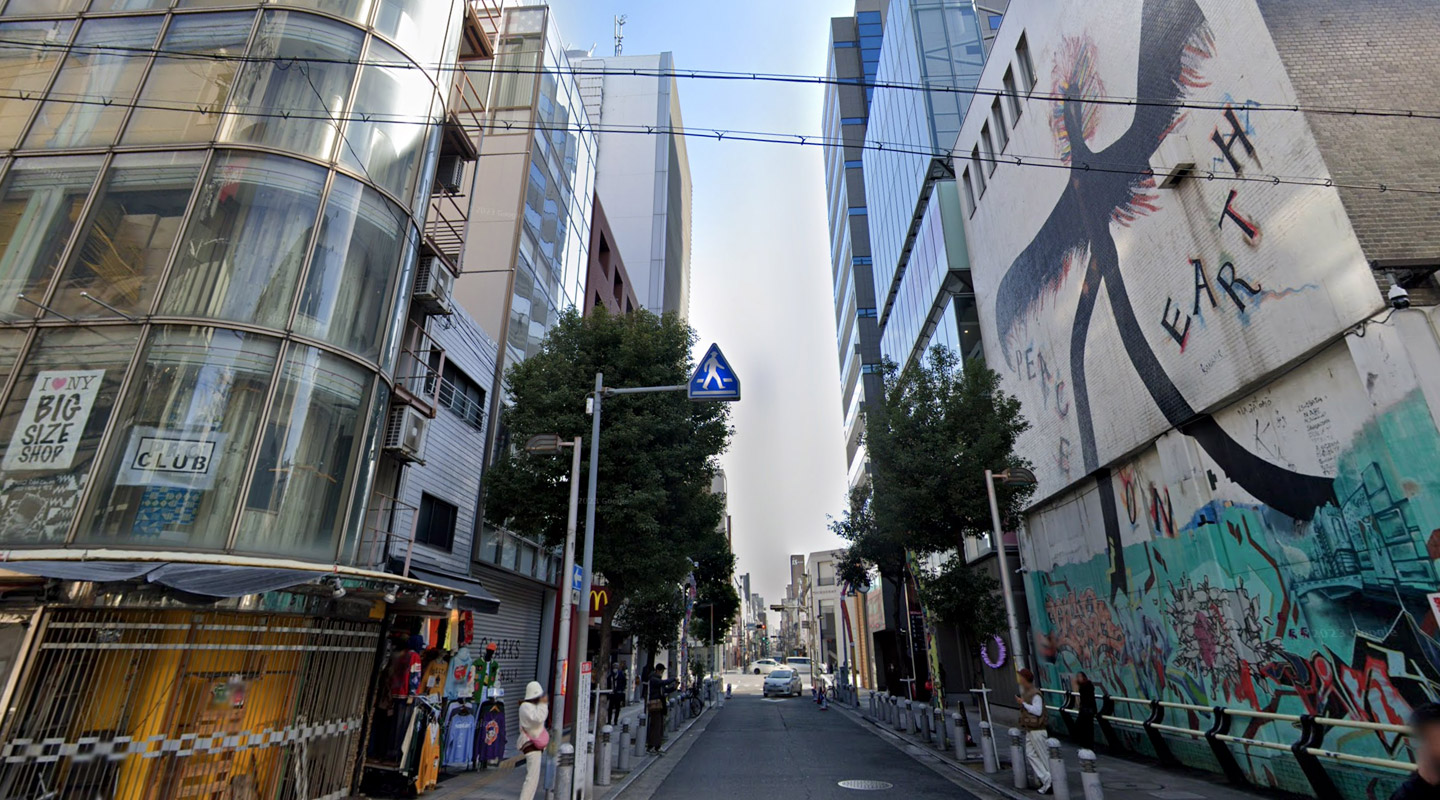
Often referred to as “Amemura,” this district is the epicenter of youth culture, fashion, and subcultures, drawing inspiration from American pop culture.
Traveler Tip: Keep an eye out for the vivid street art and murals, and scour vintage shops for unique finds.
Making the Most of Each Neighborhood:
- Local Interactions: Osaka’s residents, known for their warmth and humor, make the city’s character even more endearing. Engaging with locals in eateries or bars can enhance your neighborhood experience.
- Footwear: Osaka’s neighborhoods are best explored on foot. Ensure you wear comfortable shoes for those long strolls.
- Stay Connected: While Osaka is relatively easy to navigate, having a SIM card or pocket Wi-Fi can be handy for instant map access or translation needs.
Attractions & Landmarks
Osaka, a mesmerizing blend of history and modernity, offers a rich tapestry of attractions.
Most Iconic Attractions and Landmarks in Osaka
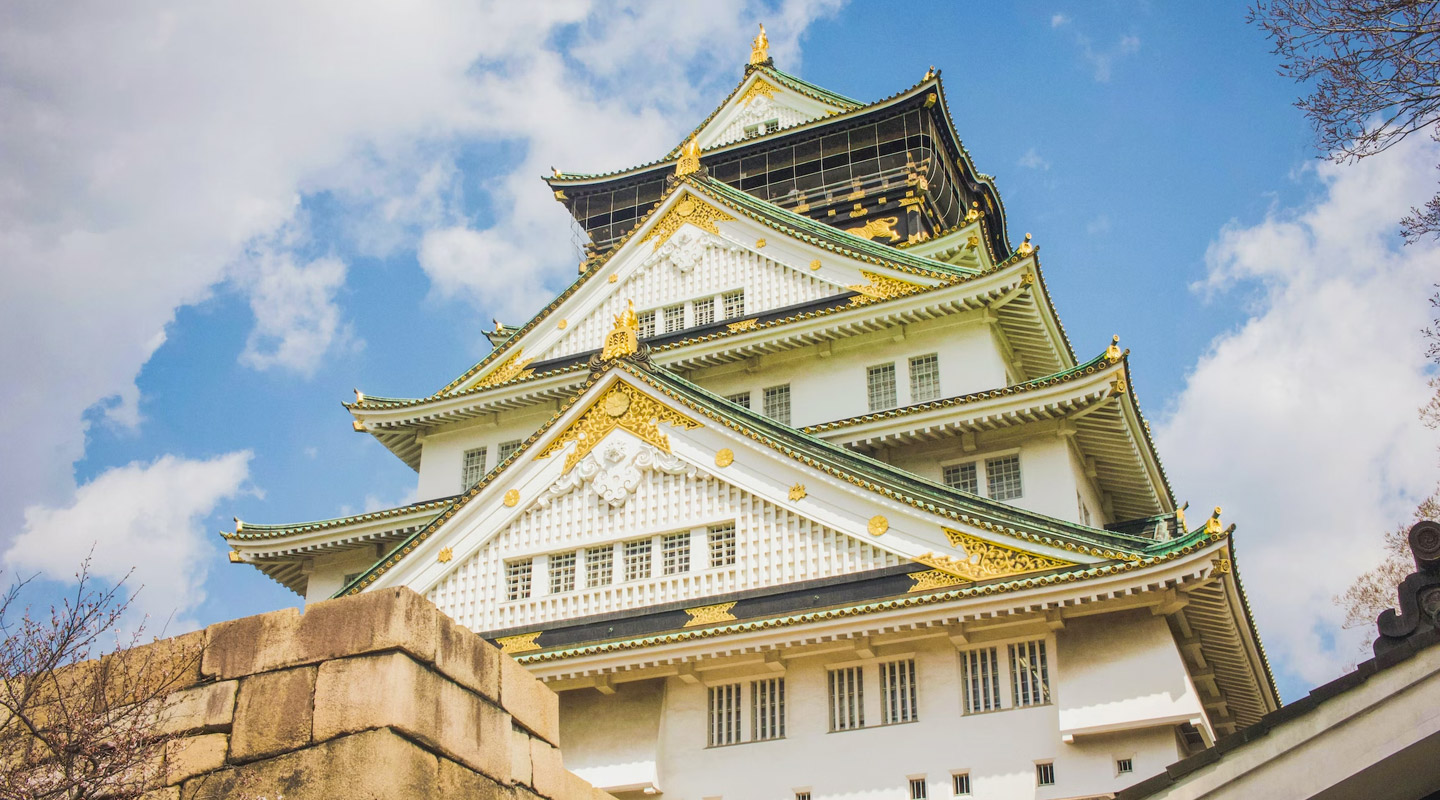
A symbol of Osaka’s history, this stunning castle stands surrounded by verdant gardens and impressive stone walls. Inside, a museum narrates the city’s past.
Traveler Tip: Go during cherry blossom season for breathtaking views. The vast park is a popular spot for hanami (flower-viewing) picnics.
Osaka Castle: More Information
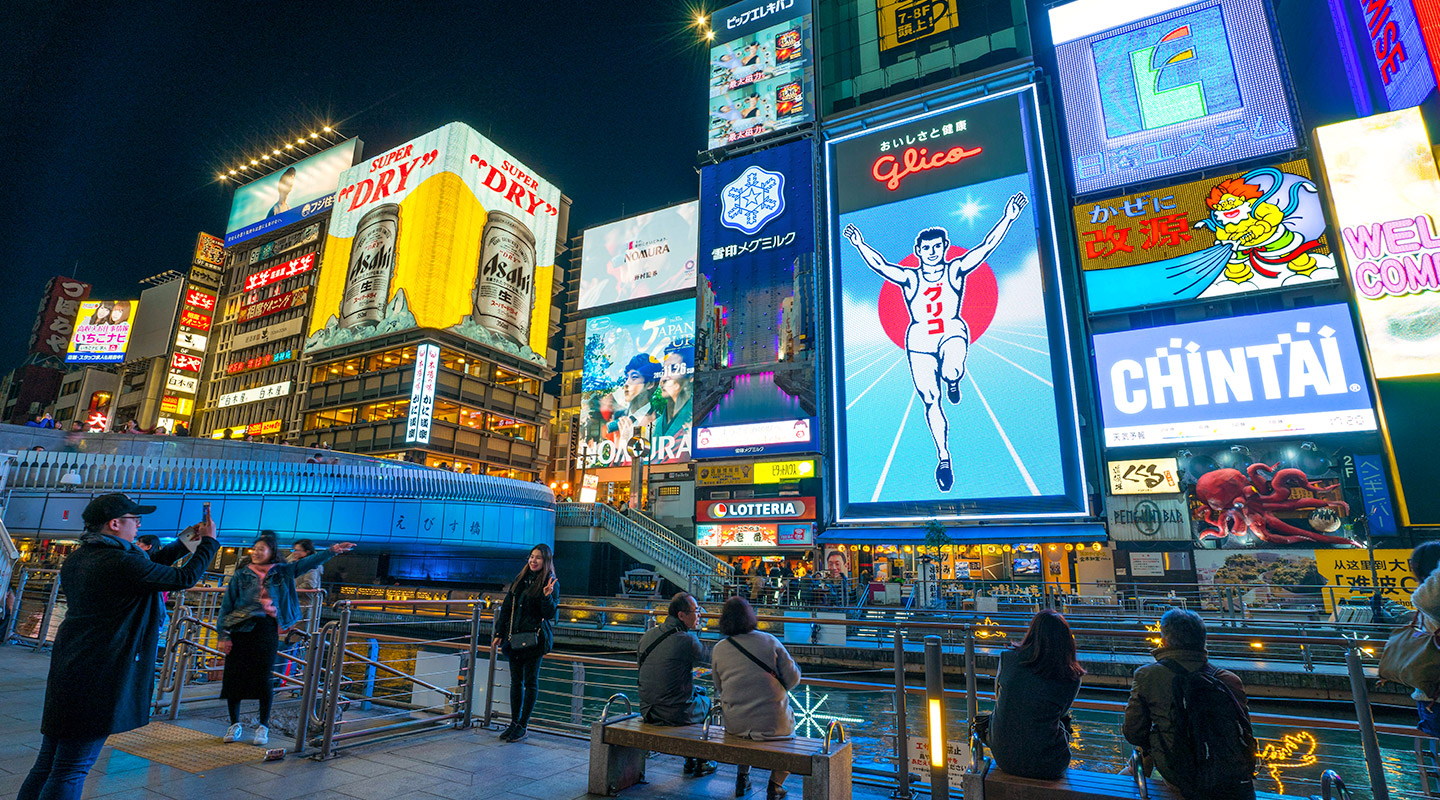
Osaka’s entertainment heart, known for its dazzling neon lights, eccentric signboards (like the famous Glico Man), and abundant dining options.
Traveler Tip: Visit in the evening to witness the area in its full glory and savor some local street food.
Dotonbori: More Information
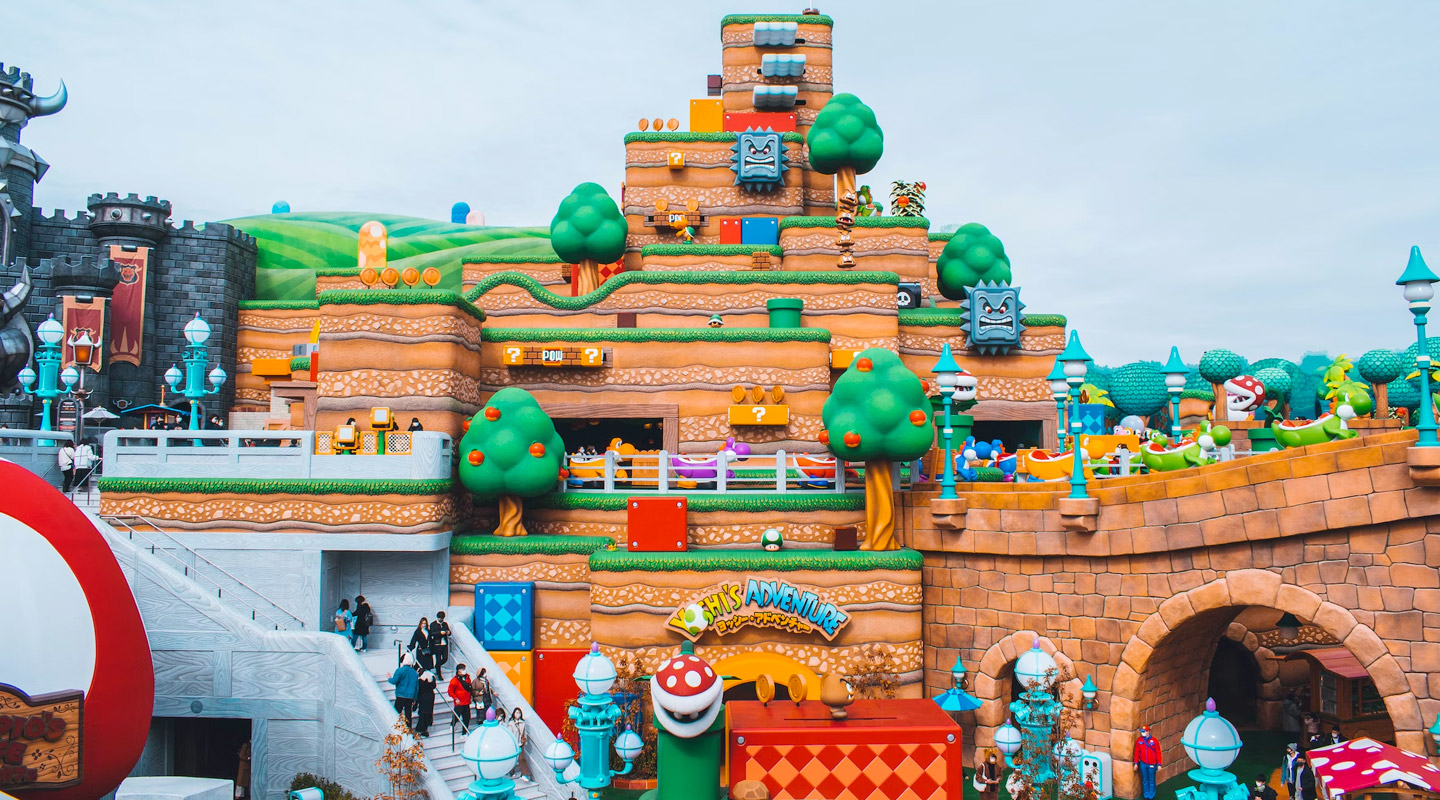
A world-renowned theme park with thrilling rides and shows inspired by blockbuster movies.
Traveler Tip: Arrive early and consider purchasing an express pass during peak times to skip long lines.
Universal Studios Japan: More Information
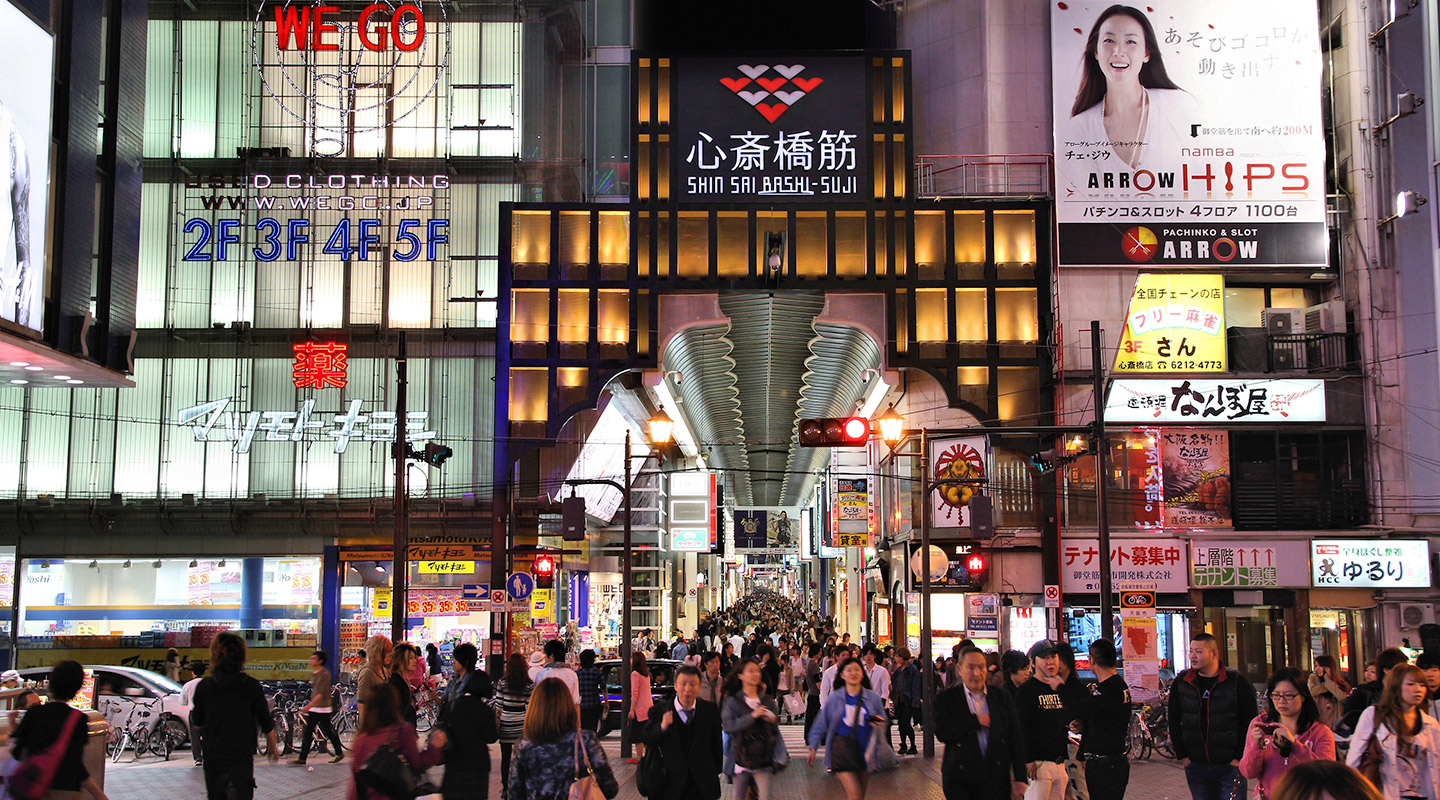
A shopper’s paradise! This covered street boasts a mix of international brands and local boutiques.
Traveler Tip: Take a detour into Amerikamura, often called “Amemura,” for unique finds and youth culture.
Shinsaibashi Shopping Arcade: More Information

One of Japan’s oldest shrines, showcasing a unique architectural style distinct from Kyoto’s shrines.
Traveler Tip: Cross the beautiful arched bridge, known as the Taiko Bridge, for a serene view of the grounds.
Sumiyoshi Taisha: More Information
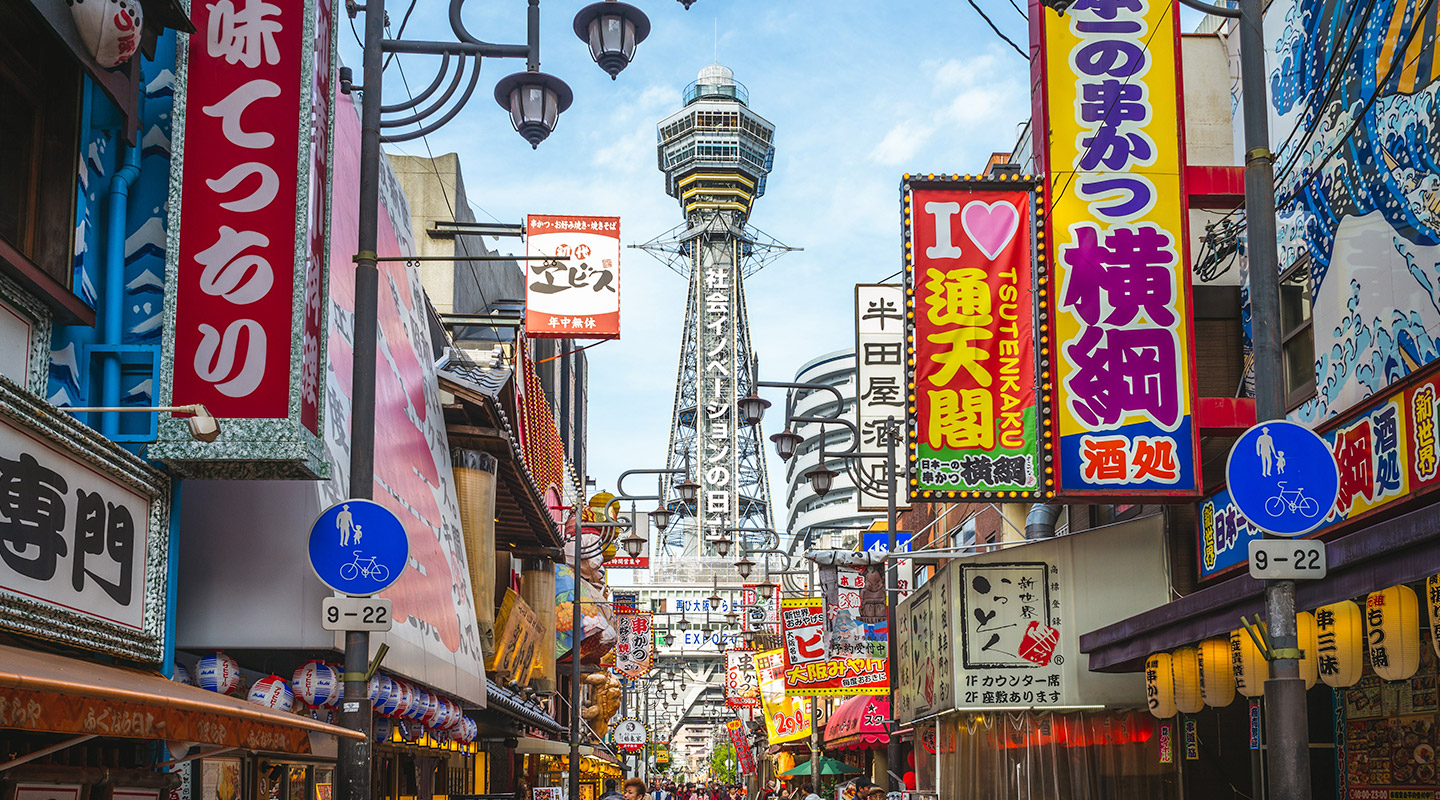
Osaka’s nostalgic symbol located in the Shinsekai district. Climb to the top for a panoramic city view.
Traveler Tip: Explore the surrounding area to get a feel for Osaka’s retro side, and don’t miss out on kushikatsu, a local specialty.
Tsutenkaku Tower: More Information
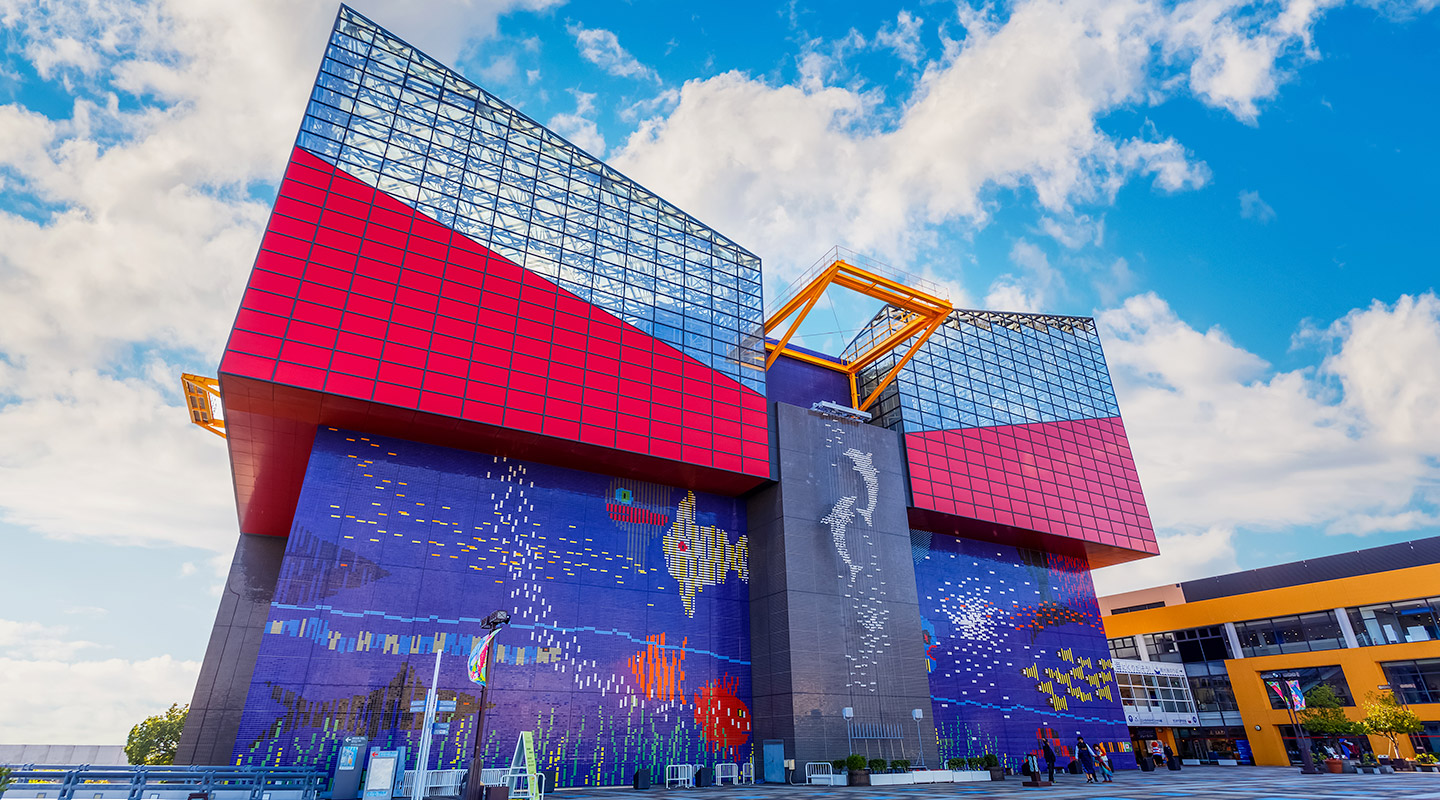
One of the world’s largest aquariums, offering an aquatic journey from the Pacific Rim’s diverse habitats.
Traveler Tip: The evening illumination transforms the aquarium, providing a different ambiance. Check the feeding schedule to see marine life in action.
Osaka Aquarium Kaiyukan: More Information
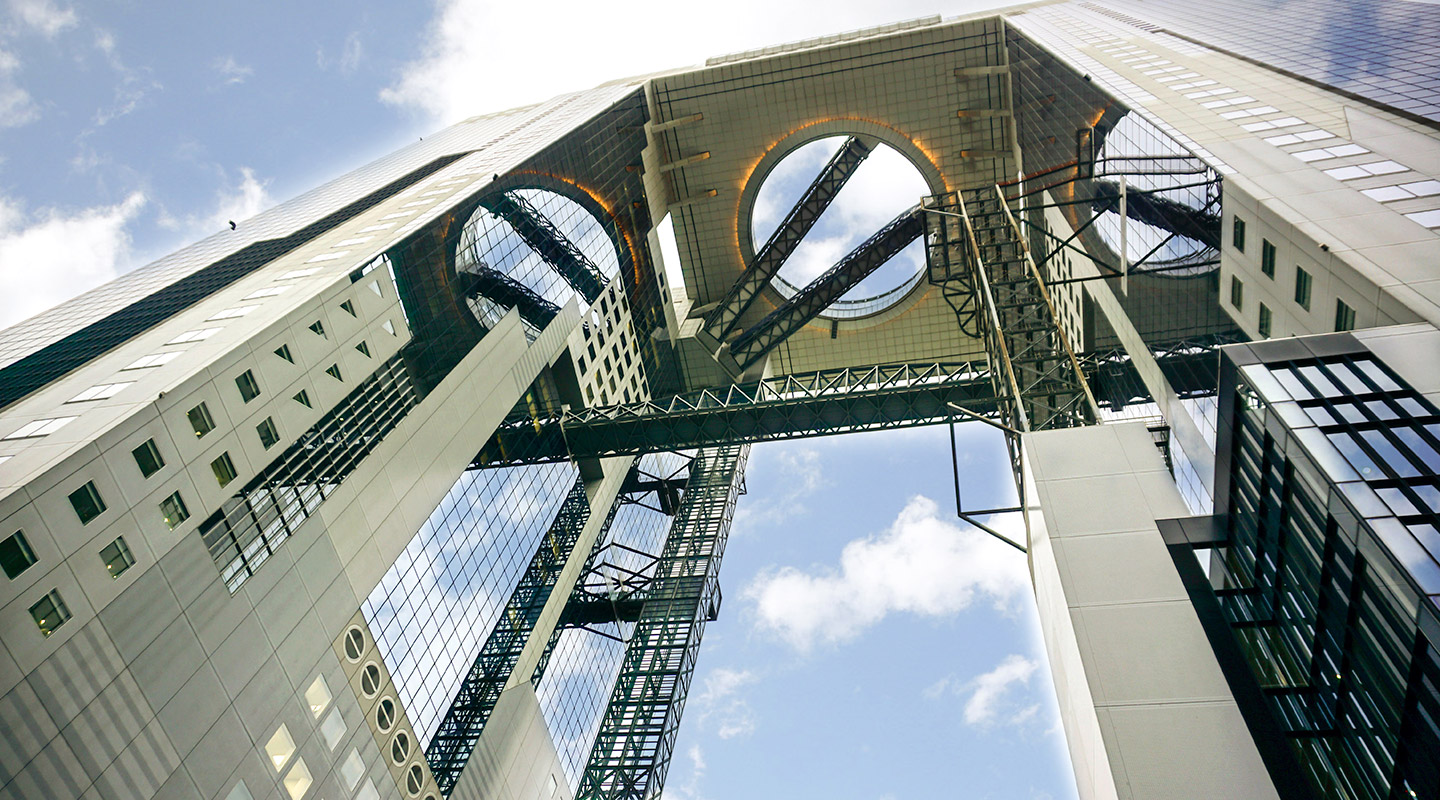
A futuristic structure with an observatory offering sweeping views of the urban sprawl.
Traveler Tip: Visit at sunset for a magical transition from day to night.
Umeda Sky Building: More Information
Planning Your Visit:
To make the most of these attractions, consider their proximity. For instance, Dotonbori and Shinsaibashi are within walking distance of each other. Similarly, if you’re staying near Umeda, the Umeda Sky Building is a must-visit.
Must-Visit Museums
Osaka’s museums offer a rich palette of cultural, historical, and quirky explorations. From the chronicles of ancient dynasties to the playful journey of a cup noodle, there’s an institution here for every curious soul. Happy exploring!
Osaka Museum of History (大阪歴史博物館)
Offering panoramic views of Osaka Castle, this museum tells the story of Osaka’s development. Multiple interactive exhibits cover different historical periods, making it engaging for all ages.
National Museum of Ethnology (国立民族学博物館)
A haven for anthropology enthusiasts, this museum showcases the diverse cultures of the world. Its vast collection of artifacts celebrates global heritage, emphasizing human connections and culture.
Osaka Science Museum (大阪市立科学館)
A family-friendly attraction focusing on science and astronomy. With hands-on exhibits and a planetarium, it encourages curiosity and exploration in both children and adults.
The National Art Museum of Osaka (国立国際美術館)
This subterranean museum, known for its modern and contemporary art collection, hosts rotating exhibitions from Japan and abroad. Its striking architecture is itself a piece of art.
Kaiyukan Aquarium (海遊館)
Although not a traditional museum, Kaiyukan is one of the largest public aquariums in the world. It offers immersive exhibits of marine life, including a massive Pacific Ocean tank.
Cup Noodles Museum Osaka Ikeda (カップヌードルミュージアム 大阪池田)
Celebrating the iconic instant noodle, this quirky museum lets you create your custom cup noodle. It’s a fun and interactive way to explore the history of a global culinary phenomenon.
Osaka Museum of Housing and Living (大阪くらしの今昔館)
Travel back in time and experience Osaka’s daily life during the Edo period. Explore recreated streets, traditional houses, and even try on period costumes for a complete immersion.
Mint Museum (造幣博物館)
Part of the Japan Mint, this museum offers insights into the production of coins and the history of Japanese currency. Unique and rare coins from around the world are showcased.
City Parks in Osaka
Osaka’s parks offer a serene respite from the city’s energetic pace. Not only are they a visual delight with their meticulously maintained landscapes, but they also provide a window into the city’s seasonal transformations. The best part? Many of them are free to enter.
Osaka Castle Park (大阪城公園, Ōsakajō Kōen)
Surrounding the famous Osaka Castle, this park stretches over 100 hectares. With vast lawns, moats, and centuries-old trees, it’s a perfect picnic spot.
Traveler Tip: During cherry blossom season, the park turns into a sea of pink, offering some of the best hanami spots in the city.
Nakanoshima Park (中之島公園)
Nestled between two rivers in central Osaka, Nakanoshima Park is a charming oasis. It’s home to the iconic Osaka Central Public Hall and a lovely rose garden.
Traveler Tip: Visit in May or October to witness the rose garden in full bloom, with over 300 varieties on display.
Tsurumi Ryokuchi Park (鶴見緑地公園)
Formerly the site for the International Garden and Greenery Exposition in 1990, this park boasts international-themed gardens, ponds, and a windmill.
Traveler Tip: The park’s seasonal flower displays are a visual treat. The tulip garden in spring is a must-see.
Kemasakuranomiya Park (毛馬桜之宮公園)
As the name suggests, this park celebrates cherry blossoms. Lined with thousands of cherry trees, the riverside paths offer picturesque views.
Traveler Tip: Rent a bike nearby and enjoy a leisurely ride under the cherry blossom canopy during spring.
Nagai Park (長居公園)
A multifunctional park in southern Osaka, it hosts a stadium, botanical garden, and natural forest areas. It’s an excellent spot for jogging and family outings.
Traveler Tip: Visit the botanical garden (entry fee required) if you’re keen on exploring a diverse collection of plants.
Osaka Off the Beaten Path
While Osaka’s main attractions draw crowds, the city is also sprinkled with lesser-known treasures that offer a more intimate experience. Dive into the understated allure of Osaka by venturing beyond the popular routes.
Nakazakicho (中崎町)
A retro neighborhood that escaped the rapid modernization of Osaka, Nakazakicho is a nostalgic trip down memory lane with its Showa-era atmosphere, old wooden houses, and chic boutiques.
Traveler Tip: Ideal for slow strolling, the area is dotted with quaint cafes and vintage shops. Don’t forget to check out small art galleries tucked in alleyways.
Fukushima (福島)
A district that offers a beautiful blend of the old and new. With its historical temples and contemporary eateries, it’s a journey through time.
Traveler Tip: It’s a haven for food enthusiasts. Dive into the local ‘tachinomi’ standing bars to sample Osaka’s vibrant nightlife minus the tourist crowds.
Suminoe Park (住之江公園)
Not just a typical park, Suminoe is home to a traditional Japanese garden, teahouses, and lovely ponds.
Traveler Tip: Participate in a traditional tea ceremony here. Reservations might be required, so plan ahead.
Tamatsukuri Inari Shrine (玉造稲荷神社)
An ancient shrine dedicated to the god of jewel making. Its quiet ambiance provides a spiritual respite from the city’s hustle.
Traveler Tip: Look out for the stone fox statues, believed to be messengers of the deity Inari.
Horie (堀江)
A trendy district with an eco-friendly spirit, Horie is home to boutique shops, unique cafes, and stylish architecture.
Traveler Tip: Known for its design-centric establishments, you’ll find numerous stores selling organic and eco-friendly products.
Osaka’s Kofun (古墳)
These ancient burial mounds shaped like keyholes date back to the 5th century. They provide a glimpse into Japan’s rich history.
Traveler Tip: Mozu Tombs, a UNESCO World Heritage site, is the most famous among them. However, several smaller kofun are scattered across the city and receive fewer visitors.
While venturing off the beaten path can be thrilling, it’s essential to remember that these areas might not be accustomed to large tourist numbers. Always respect local customs, keep noise levels down, and ensure you’re not intruding on residents’ daily lives.
Accommodation
In Osaka, where centuries-old traditions coexist with cutting-edge modernity, accommodations come in a range of styles and budgets. From historic ryokans to futuristic capsule hotels, Osaka offers a place to rest for every traveler. Here’s a guide to ensure you find the perfect abode to recharge.
Hotels
Osaka boasts a diverse array of hotels ranging from luxury establishments to budget-friendly options.
Traveler Tip: The Umeda and Namba districts are especially popular for hotel accommodations due to their central locations and proximity to transport hubs.
Ryokan (旅館)
Experience traditional Japanese hospitality in a ryokan, with tatami-matted rooms, futon beds, and communal baths (onsen).
Traveler Tip: Many ryokans offer dinner and breakfast as part of their package. Opt for a stay in one to indulge in authentic Japanese cuisine and a truly immersive experience.
Capsule Hotels (カプセルホテル)
Perfect for solo travelers or those on a budget, these futuristic hotels offer compact sleeping pods equipped with essentials.
Traveler Tip: While most are designed for men, there are capsule hotels specifically for women. Always check beforehand.
Guesthouses & Hostels
Budget-friendly and sociable, these are great options for backpackers or those looking to meet fellow travelers.
Traveler Tip: Popular districts like Shinsaibashi and Tennoji have a good number of guesthouses. Many also offer free Wi-Fi and communal kitchens.
Love Hotels
Characterized by their privacy and unique themes, love hotels are short-stay lodgings typically used by couples.
Traveler Tip: While they’re primarily for couples, solo travelers sometimes use them for their novelty factor and privacy.
Booking Insights:
- Peak Seasons: Accommodations can get booked quickly during cherry blossom season (late March to early April) and autumn foliage (late November). Plan and book in advance.
- Location Matters: Stay near major train lines or stations like Osaka Station or Namba Station for easy city navigation.
- Luggage Solutions: Many accommodations, especially hostels and capsule hotels, might not have expansive luggage storage. Consider using coin lockers at train stations for convenience.
Cuisine & Dining
Like we said earlier in this travel guide, Osaka is often called Japan’s kitchen, this vibrant city stirs the hearts (and stomachs) of food lovers worldwide. With a culinary legacy that’s both deep-rooted and innovative, Osaka offers a feast not just for the palate, but also for the soul. Ready for a delicious adventure? Let’s dig in!
A Historic Tastescape
From its ancient merchant days, Osaka has been a bustling hub, trading in flavors and cooking techniques. This commercial spirit infused the city with a unique approach to food: inventive, hearty, and unpretentious.
Street Food Galore
The bustling streets of Osaka are a movable feast. Dive into Dotonbori or Shinsekai and be greeted with tantalizing aromas of:
- Takoyaki: Octopus-filled dough balls, crisped to perfection.
- Okonomiyaki: A savory pancake with a mix of ingredients, cooked right before your eyes.
- Kushikatsu: Skewered and deep-fried delights, from vegetables to meats.
Beyond Sushi
While sushi is a Japanese hallmark, Osaka offers so much more. Dive into local eateries or izakayas (taverns) to discover regional dishes, from succulent yakiniku (grilled meats) to delicate udon noodles.
Sweets and Treats
Osaka doesn’t forget those with a sweet tooth. Indulge in taiyaki (fish-shaped pastries) or dorayaki (red bean-filled pancakes). And if you’re in the mood for modern twists, trendy dessert cafes dot the city.
Local Markets
For a true sense of Osaka’s food pulse, visit local markets like Kuromon Ichiba. Here, fresh produce, seafood, and a plethora of local snacks await. Engage with vendors, sample their wares, and perhaps learn a recipe or two!
Drink Up
Pair your meal with local beverages. From aromatic sake brewed in nearby regions to the frothy delight of craft beers, there’s a drink for every plate and palate.
For the traveler thirsty for both vibrant nightlife and authentic local experiences, Namba is the place to be in Osaka. This pulsating district is brimming with a mix of traditional izakayas, modern bars, and lively clubs.
Traveler’s Tips:
- Pleasant Persistence: Some popular eateries might have queues. But as many locals will attest, the flavors are often worth the wait!
- Cash is King: While Osaka is modernizing rapidly, many small eateries prefer cash payments. Keep some yen handy.
- Respectful Reminders: Remember to say “itadakimasu” before eating (a gesture of thanks) and “gochisousama” post-meal.
Osaka’s reputation as a shopping haven is well-earned, thanks to its diverse shopping districts and malls. Whether you’re a fashionista, tech guru, or just a curious wanderer, here’s where to find your heart’s desires:
Shinsaibashi (心斎橋)
What to Expect: A blend of high-end brands and local boutiques, all under one roof in Shinsaibashi Suji.
Don’t Miss: Daimaru Department Store, filled with the latest fashion and top-quality Japanese goods.
Umeda (梅田)
What to Expect: Home to some of Osaka’s largest department stores and shopping complexes.
Don’t Miss:
- Hankyu Umeda Main Store: A high-end shopping experience offering both international and Japanese brands.
- HEP FIVE: Known for its iconic red Ferris wheel, this mall is popular among the youth for trendy fashion.
Namba (難波)
What to Expect: A lively area encompassing Dotonbori and Shinsaibashi, offering fashion, entertainment, and dining.
Don’t Miss:
- Namba Parks: A shopping complex with an extraordinary garden rooftop, offering an array of shops and dining options.
- Takashimaya: Offers luxury brands, home goods, and gourmet delights.
Tennoji (天王寺)
What to Expect: Modern shopping malls mixed with traditional shopping arcades.
Don’t Miss:
- Tennoji MIO: A favorite among locals for fashion, cosmetics, and dining.
- Abeno Harukas: Japan’s tallest commercial building houses Kintetsu Department Store, a must-visit for shopaholics.
Nipponbashi (日本橋) – Den Den Town
What to Expect: Osaka’s electronics and otaku hub, offering everything from the latest gadgets to anime and manga.
Don’t Miss: Super Kids Land – a multi-level store for electronic gadgets and toys.
Rinku Town
What to Expect: Located near Kansai Airport, it’s a popular first or last stop for travelers.
Don’t Miss: Rinku Premium Outlets: Bargain hunt at over 200 stores offering designer brands at discounted prices.
Tips for Shopping in Osaka
- Languages: Major malls often have English-speaking staff, but a translation app might come handy in smaller shops.
- Business Hours: Shopping districts are generally open from 10:00 to 20:00. Check specific stores for precise timings.
- Currency: While credit cards are widely accepted, carrying yen can be beneficial, especially in traditional market areas.
Day Trips from Osaka
Osaka’s neighboring regions weave a tapestry of cultural depth, natural beauty, and spiritual serenity. Every destination invites travelers to explore a unique facet of Japan, enriching their journey with unforgettable memories.
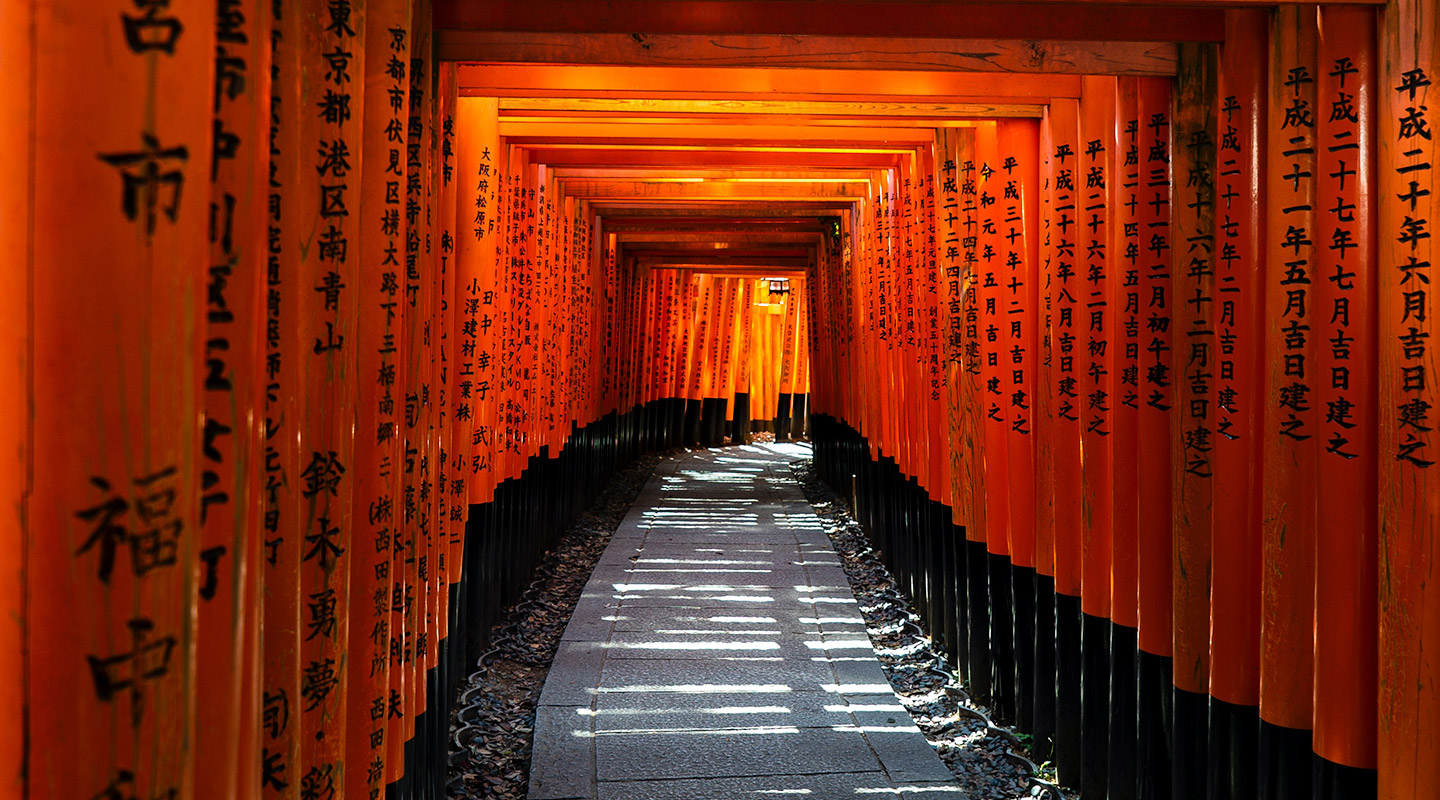
A city where ancient Japan comes alive. Wander the Gion district, where Geishas tread the cobblestone streets, or lose yourself amidst the golden temples, Zen gardens, and bamboo forests. Kyoto embodies Japanese heritage at its finest.
- Time: Approximately 30 minutes.
- Way: Take the JR Kyoto Line from Osaka Station to Kyoto Station.
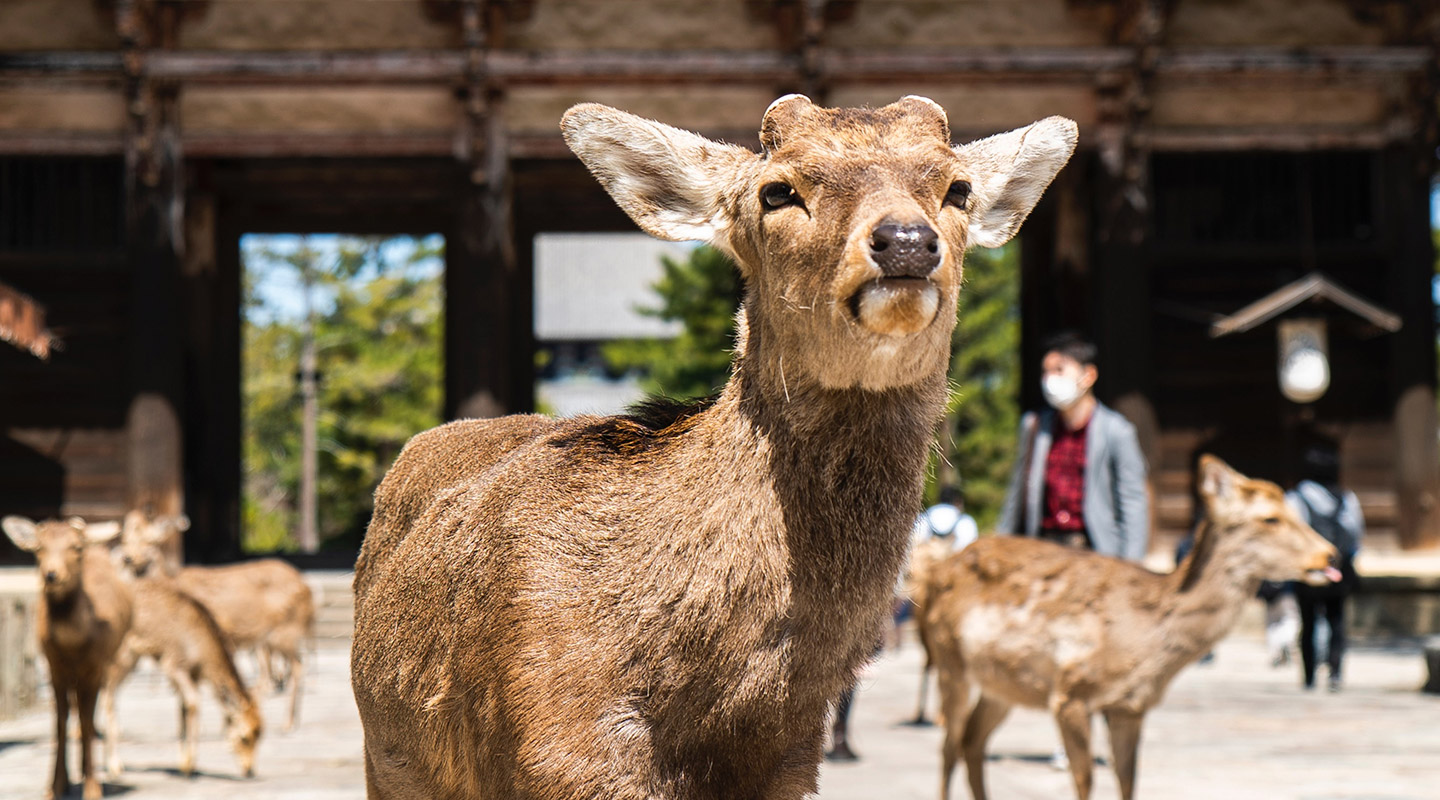
A peaceful town where sacred deer roam freely, Nara combines spirituality with history. Visit the Todai-ji Temple, home to Japan’s giant Great Buddha statue, and explore traditional wooden buildings and serene parklands.
- Time: Approximately 50-60 minutes.
- Way: Take the Kintetsu Nara Line from Namba to Kintetsu-Nara.
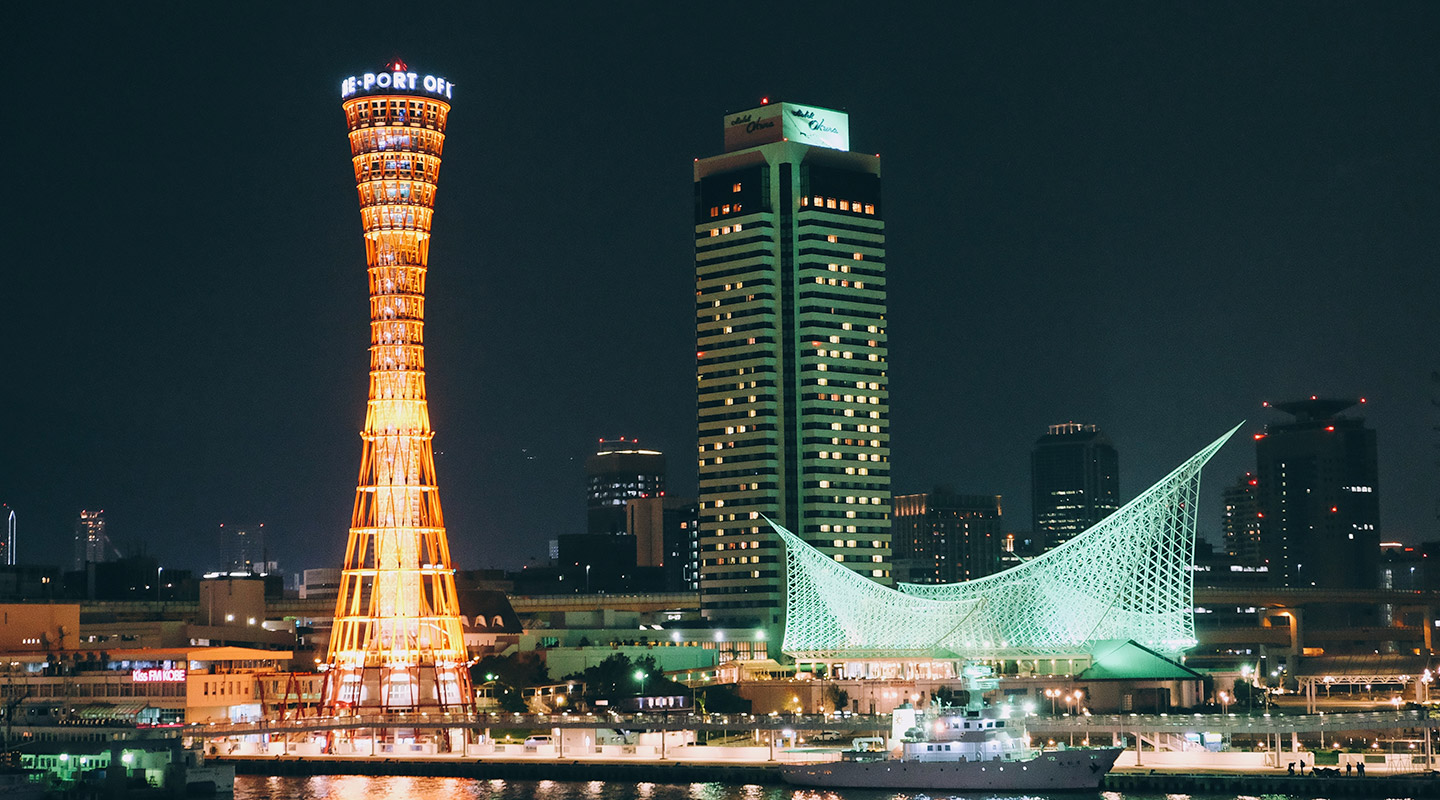
Beyond its world-famous beef, Kobe is a harbor city that has risen from the ashes of an earthquake. Explore the Kobe Harborland, Kobe Nunobiki Herb Gardens, and the surprising Kitano Ijinkan-Gai with its Western-style homes built by foreign merchants & diplomats. The observation deck of Kikuseidai offers breathtaking views.
- Time: About 25-30 minutes.
- Way: Take the JR Kobe Line from Osaka Station to Kobe Station.
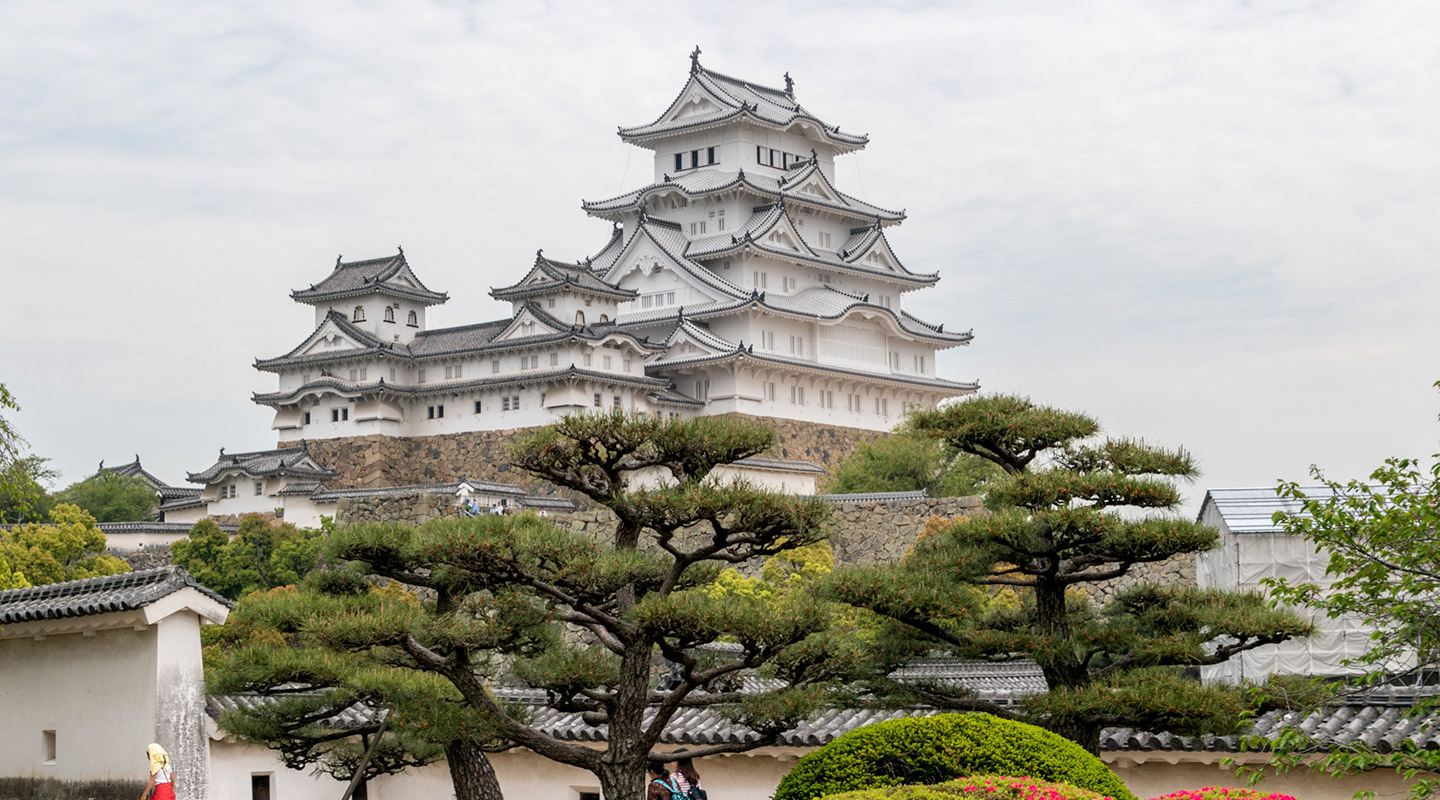
Dominated by the majestic Himeji Castle, often referred to as the “White Heron Castle”, the city is a time capsule of feudal Japan. The castle’s pristine architecture and surrounding gardens offer a day of historical immersion.
- Time: Around 1 hour.
- Way: Use the JR Shinkansen or the JR Kobe Line from Osaka Station to Himeji.
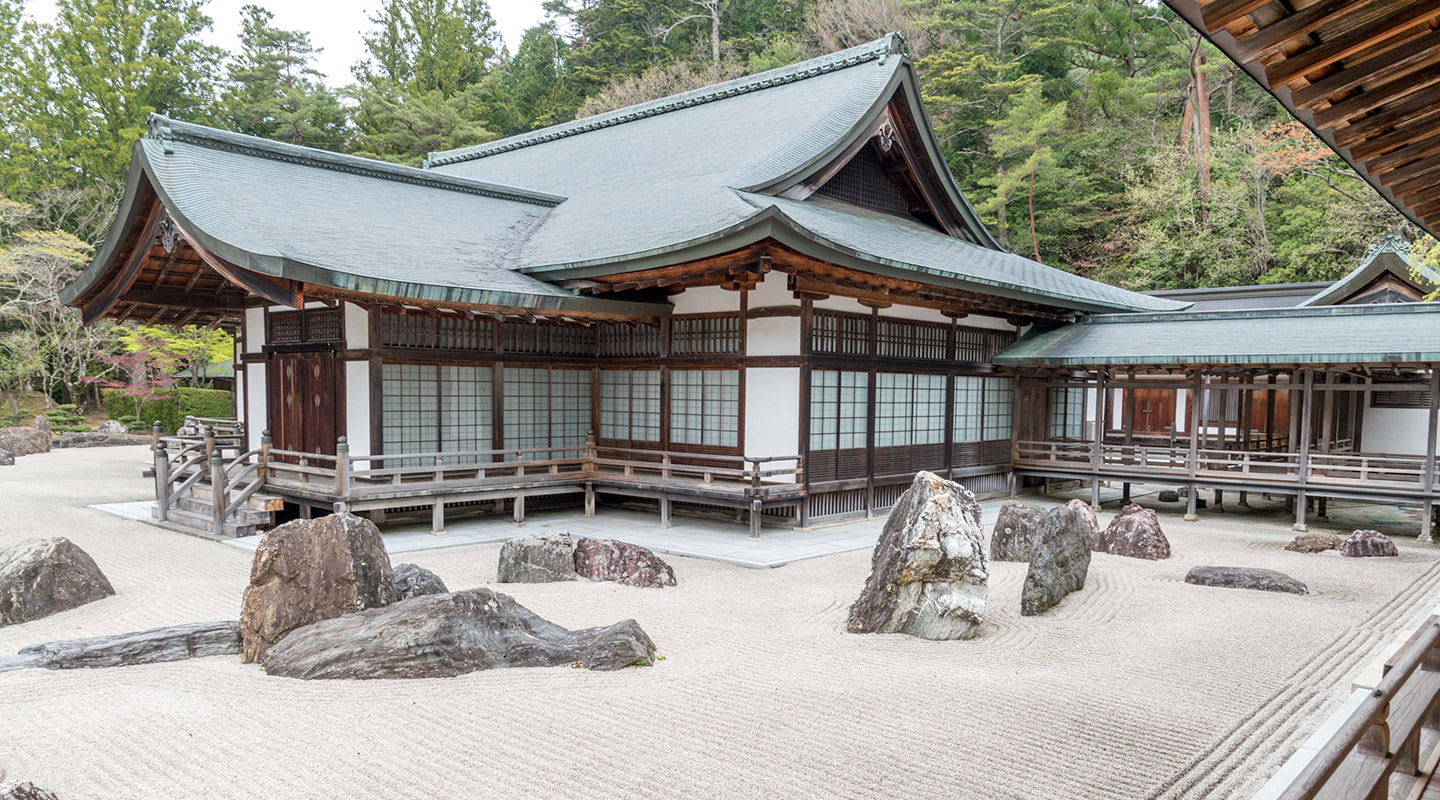
A sanctuary in the clouds, this mountain temple complex offers spiritual sojourns. Pilgrims and tourists visit for temple lodgings, meditation, and the tranquil Okunoin Cemetery—a forested temple graveyard with ancient stone paths.
- Time: Approximately 1.5-2 hours.
- Way: Take the Nankai Koya Line from Namba to Gokurakubashi, then the cable car to Koyasan.
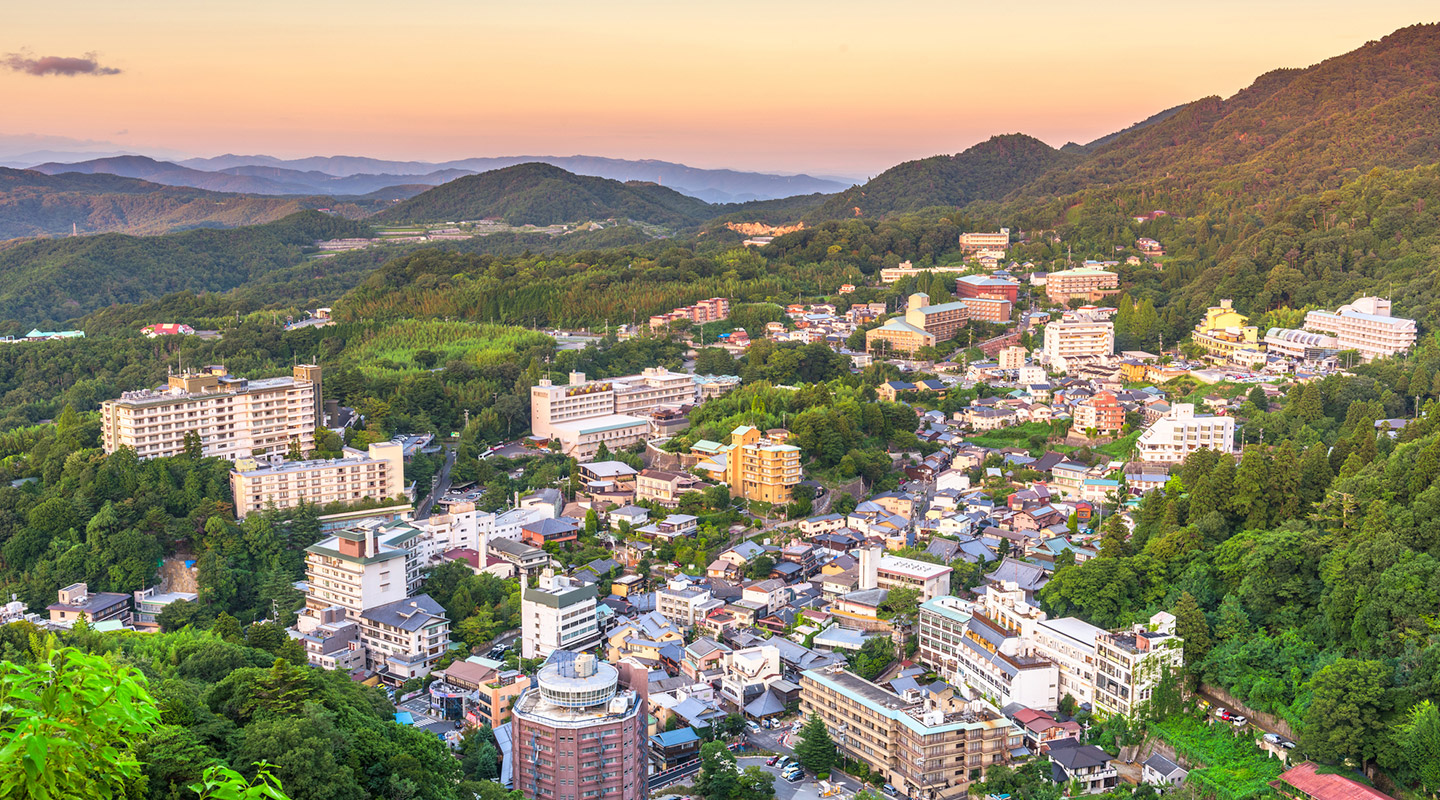
Nestled in the Rokko mountain range, Arima Onsen is a spa haven. With its gold and silver thermal waters reputed for healing properties, this ancient hot spring town offers the ultimate relaxation amidst traditional ryokans and scenic views.
- Time: Around 1 hour.
- Way: From Osaka (Umeda), take the Hankyu Kobe Line to Rokko, then transfer to the Kobe Electric Railway to Arima Onsen.
Awaji Island (淡路島)

An island of natural wonders, from the mesmerizing Naruto Whirlpools to botanical gardens, it’s an oasis of calm. The Yumebutai terraced gardens and the vibrant flower displays are a visual treat for nature lovers.
- Time: Approximately 2 hours.
- Way: Take a bus from Osaka Namba to Awaji Yumebutai.
Kurashiki (倉敷)
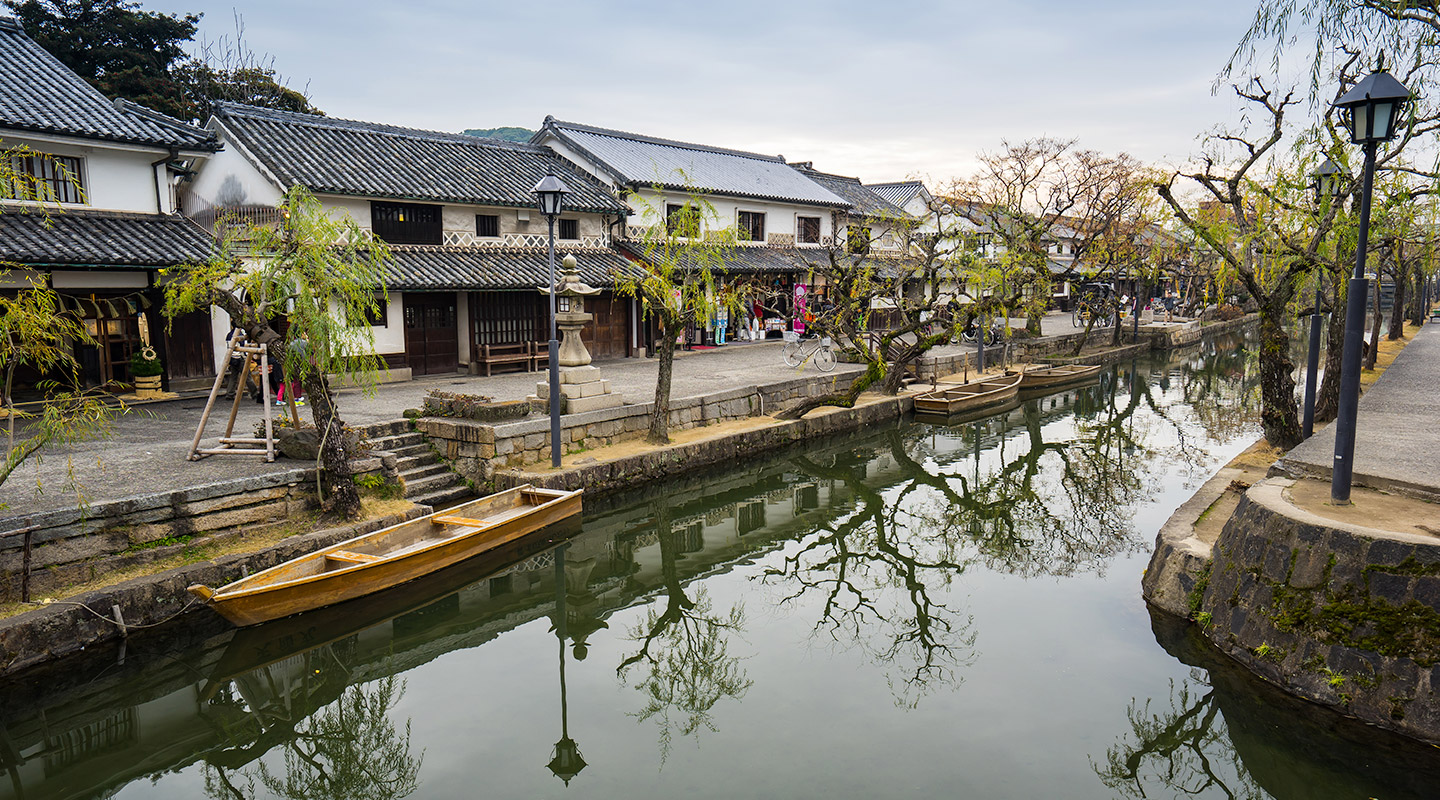
A canvas painted with historic charm. The Bikan Historical Area is adorned with Edo-period buildings, weeping willows, and a picturesque canal. Museums and boutiques make it a delightful fusion of the past and present.
- Time: About 1.5 hours.
- Way: Take the JR Shinkansen from Shin-Osaka to Okayama, then transfer to the JR Sanyo Line to Kurashiki.

Home to the historical Hikone Castle, one of Japan’s original twelve castles, Hikone is a blend of samurai history and serene landscapes. Wander around Genkyu-en Garden, stroll Yumekyobashi Castel Road for local flavors, and get a lakeside view of Lake Biwa.
- Time: Around 1.5 hour.
- Way: Take the JR Tokaido Main Line from Osaka Station to Hikone Station.
Wakayama (和歌山市)
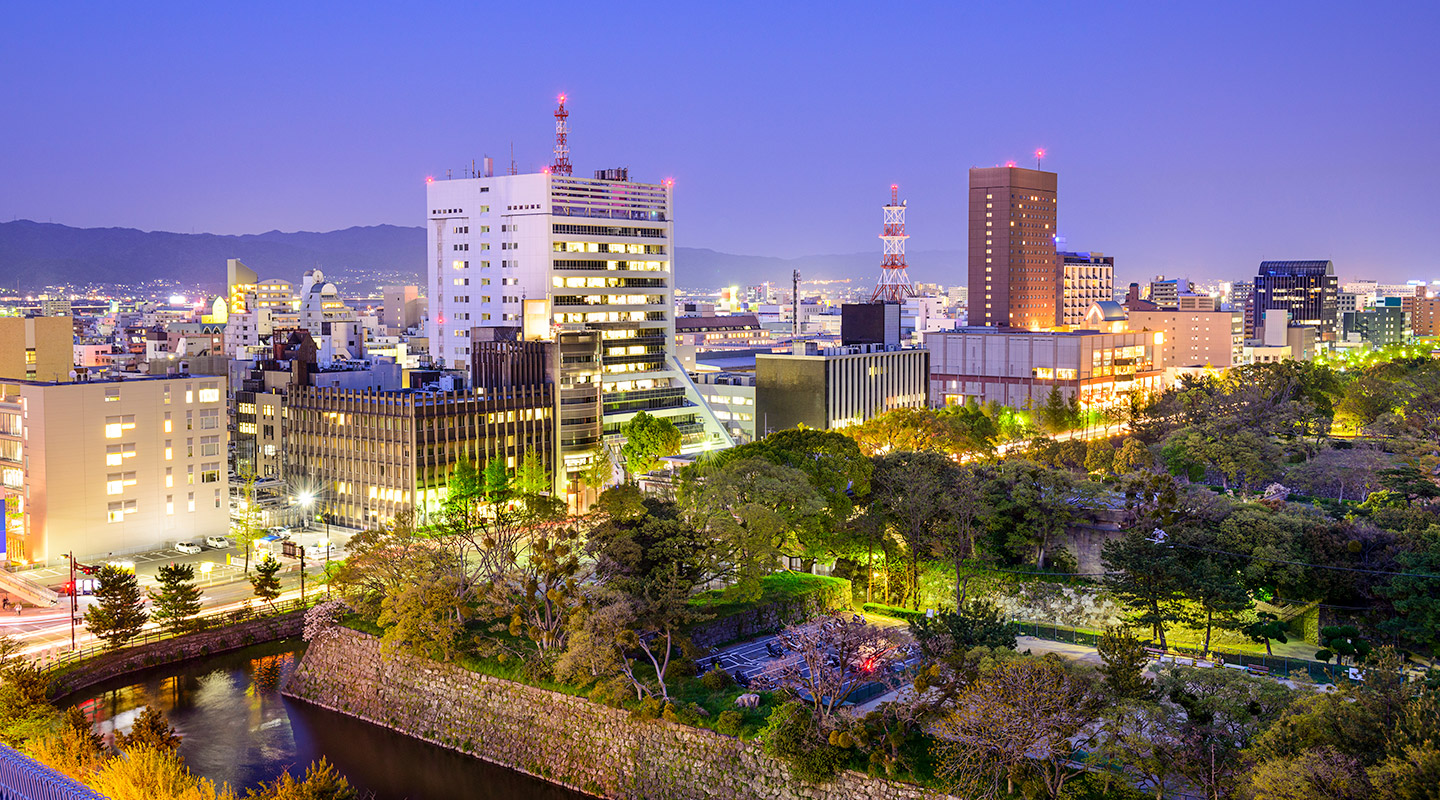
Anchored by the impressive Wakayama Castle, this coastal city seamlessly marries historical charm with modern vibes. As the prefectural capital, it’s a hub for regional culture, boasting serene gardens, vibrant market streets, and waterfront views—a compact slice of Japan’s diverse allure.
- Time: Approximately 2 hours.
- Way: Use the Osaka Loop Line from Osaka to Wakayama.
Cultural Insights
Delving into the cultural core of Osaka allows travelers to experience its vibrancy more deeply. Here are some cultural facets you’d love to know:
“Kuidaore” (食い倒れ) – The Love for Food
Literally translating to “eat until you drop,” this phrase epitomizes Osaka’s culinary enthusiasm. Local eateries, street food stalls, and high-end restaurants all vie for your attention. When in Osaka, indulge!
Friendly and Direct
Osakans are known for their cheerful disposition and direct communication style. Don’t be taken aback if they strike up a conversation or tease playfully—it’s all in good spirit.
The Comedic Heart of Japan
Osaka is the birthplace of “manzai”, a traditional style of stand-up comedy. The city’s sense of humor is evident everywhere, from conversations to TV shows.
Festivals Galore
Osaka has vibrant festivals like Tenjin Matsuri—one of Japan’s top three festivals—where river processions and fireworks light up summer nights. The Osaka Castle Park Cherry Blossom Festival in spring is another can’t-miss event.
Economic Prowess
Historically, Osaka has been a merchant city. This entrepreneurial spirit remains, and many traditional businesses, from sake breweries to textile firms, still operate in the city.
Unique Greetings
Instead of the usual “How are you?” Osakans might greet you with “Mōkarimakka?” meaning “Are you making money?” It’s a nod to their merchant roots and an example of their light-hearted approach to life.
Traditional Theatres
While Tokyo is known for Kabuki, Osaka champions Bunraku (traditional puppet theatre) and Noh (classical Japanese musical drama). Watching these performances gives a deep dive into Japan’s theatrical traditions.
Neighborhood Pride
Each neighborhood, from bustling Dotonbori to tranquil Sumiyoshi, has its own festivals, traditions, and local food specialties. It’s worth exploring these distinct pockets of culture.
Craftsmanship
From intricate doll-making to the crafting of traditional musical instruments, Osaka continues to be a beacon of Japanese craftsmanship. Many workshops offer travelers a firsthand look at these age-old arts.
Etiquette
Just like the rest of Japan, there are etiquettes to observe. For example, remember to stand on the right side of escalators (a contrast to Tokyo’s left). A bow is a common gesture of respect, gratitude, and greeting.
Immerse yourself, be respectful, and don’t hesitate to engage with locals. Osakans appreciate genuine interest in their culture.
Currency
The official currency is the Japanese Yen (¥). Most establishments accept credit cards, but it’s always wise to carry some cash, especially for smaller businesses or when venturing to less touristy areas.
ATMs
While ATMs are widely available, not all accept foreign cards. Opt for those in convenience stores or post offices; they’re usually compatible with international cards.
Language
The primary language is Japanese. While English is spoken in tourist spots, it’s appreciated if you know basic phrases. Pro-tip: Carry a translation app or phrasebook.
Weather
Osaka experiences four distinct seasons:
- Spring (March-May): Mild and pleasant.
- Summer (June-August): Hot and humid with a rainy season in June.
- Autumn (September-November): Cool with colorful foliage.
- Winter (December-February): Cold but not extreme, with minimal snowfall.
Electricity
Japan uses 100V AC with Type A outlets (two flat pins). It’s advisable to carry a universal adapter.
Internet & SIM Cards
Free Wi-Fi spots are in most public areas, including train stations and cafes. For uninterrupted connectivity, consider renting a pocket Wi-Fi or buying a local SIM card at the airport.
Transportation
Osaka boasts a superb public transport network. The Osaka Amazing Pass offers unlimited subway, tram, and bus rides. For intercity travel, a Japan Rail Pass might be cost-effective.
Tipping
It’s not customary to tip in Japan. Exceptional service is included in the overall price. Offering a tip might even confuse some!
Safety
Osaka is remarkably safe, even at night. Still, always practice common travel safety measures, such as not leaving belongings unattended.
Tourist Information Centers
Find these hubs at major stations like Osaka and Umeda stations. They offer maps, brochures, and advice to aid your exploration.
Water
Tap water is safe to drink and meets stringent quality standards.
Emergencies
The general emergency number is 110 for police and 119 for fire and ambulance services.
Etiquette
Osaka is cosmopolitan, but traditional etiquettes persist. When entering temples or certain accommodations, remove your shoes. Queue in lines, especially at train stations. And remember, public trash cans are rare, so you might need to carry your trash until you find one.
Osaka is an eclectic mix of tradition and modernity. By grasping these practicalities, you’re well on your way to blending in and making the most of your trip.


